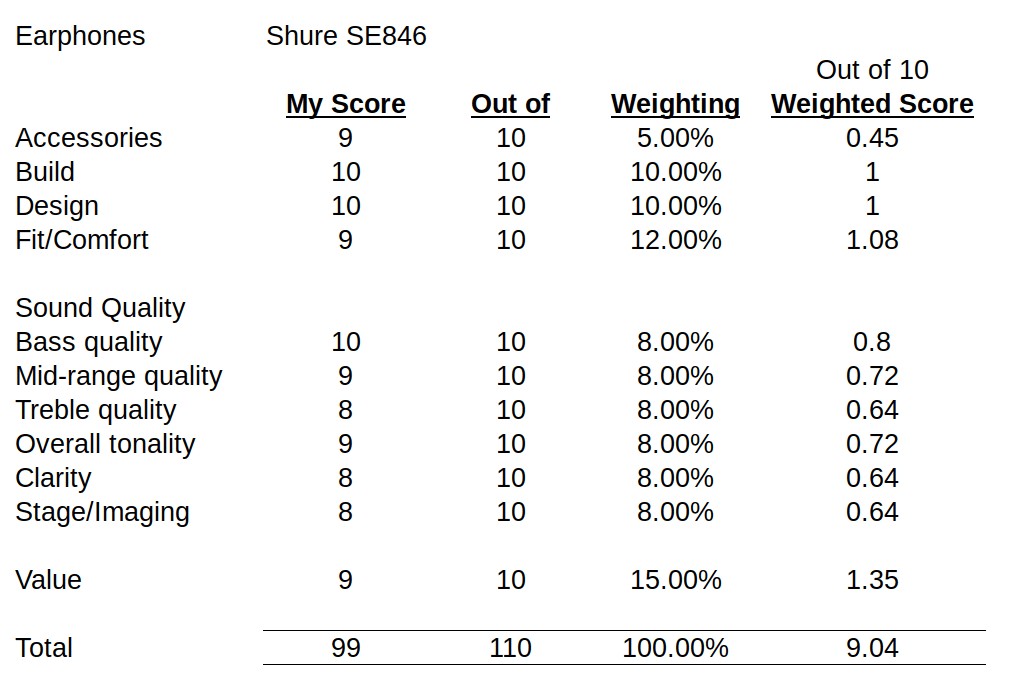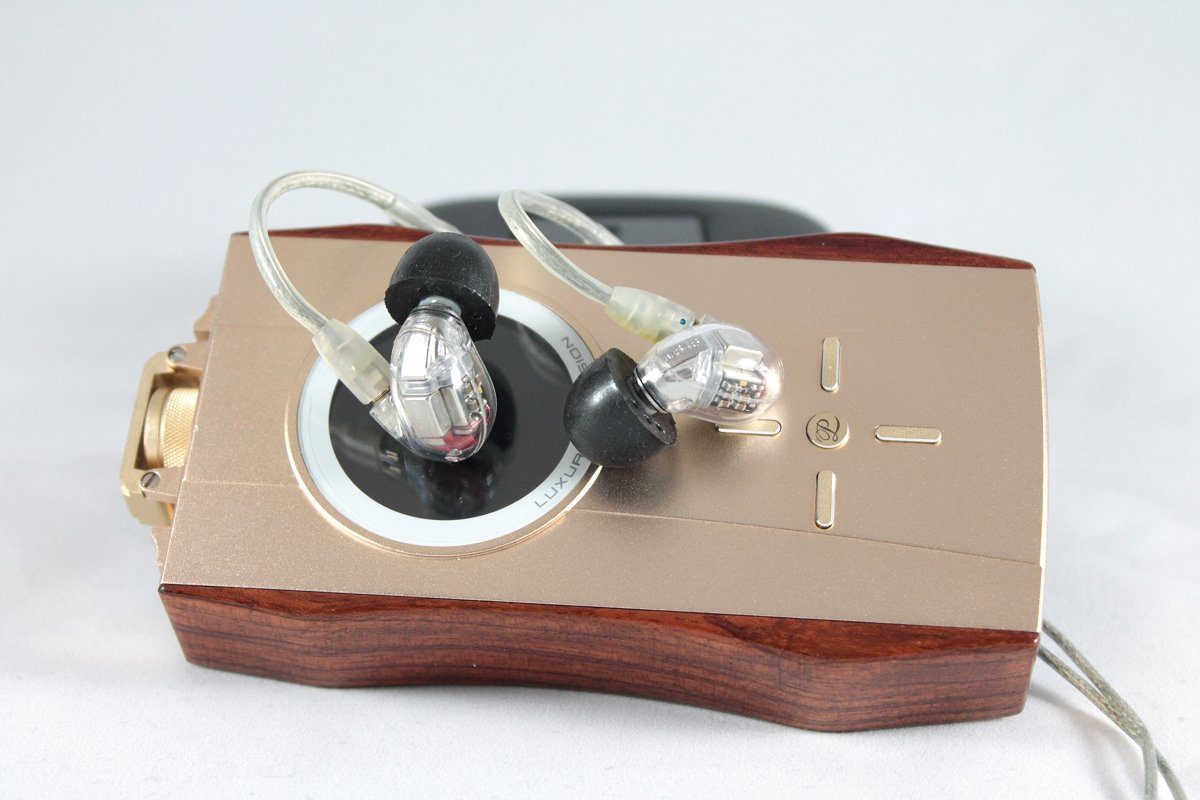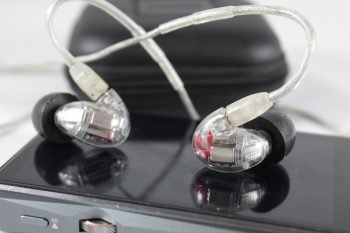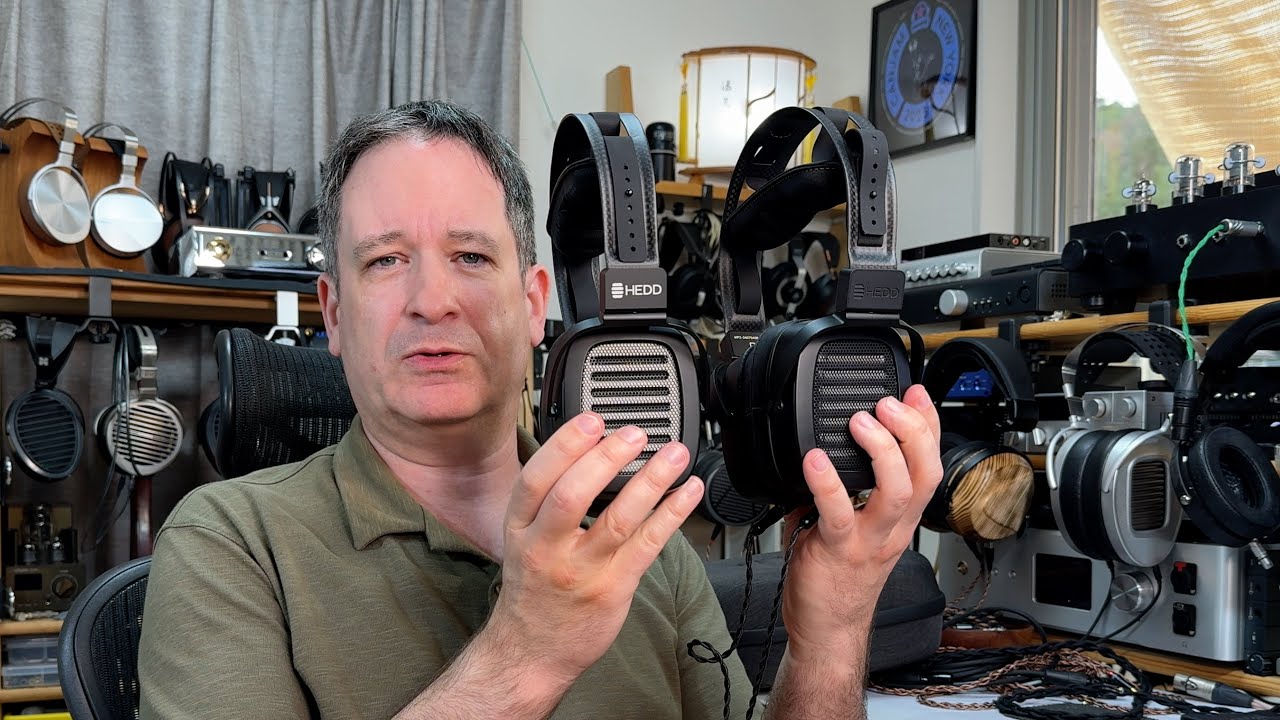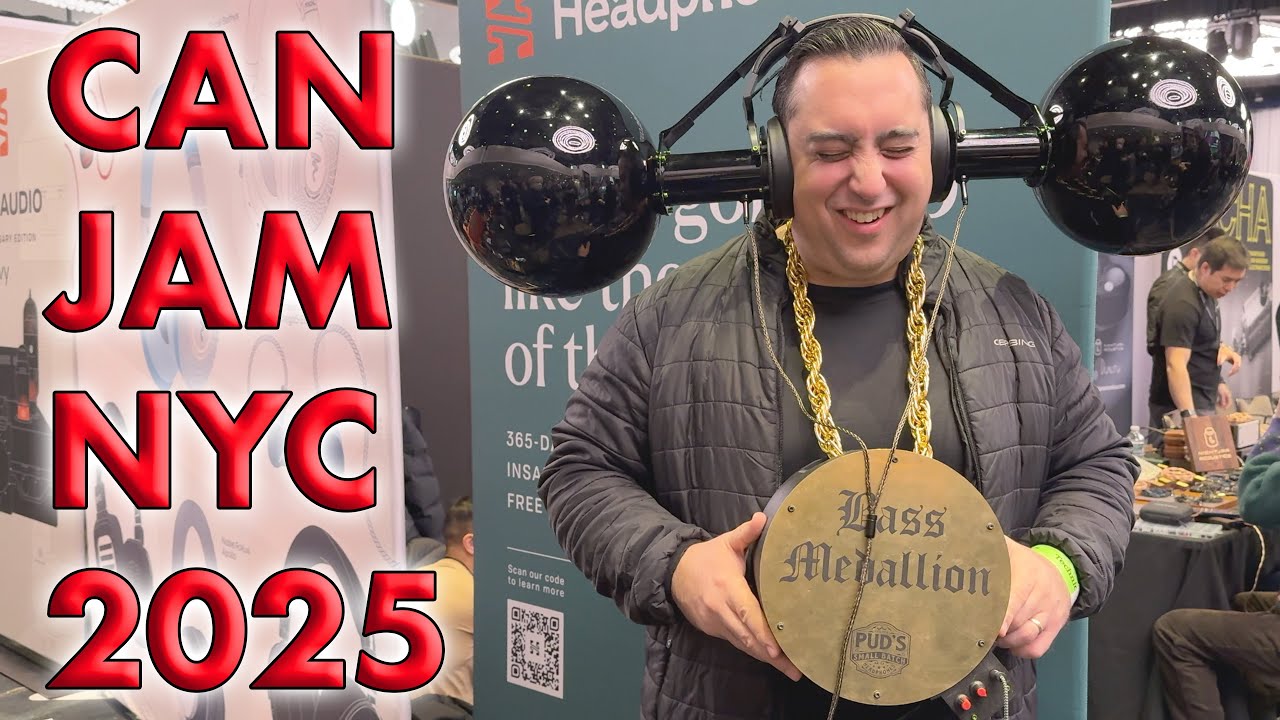
INTRODUCTION
I mentioned recently in my review of the Earsonics ES5 that while I’ve reached my own personal end-game nirvana with Headphones (HD800S, HD630VB and Mobius) and desktop set-up (iFi iUSB, iTube and iDSD), I’ve never really settled on a single pair of IEMs. The closest I’ve got have been my 64Audio U10, Alclair Curve, LZ Big Dipper and Jays q-Jays. But finding the perfect match for me has remained elusive, and you’ll see I have tested a lot of IEMs. Even HiFiMan’s excellent sounding RE2000 missed the mark in terms of comfort.
If I look back at my start in this hobby, it was with the Shure SE420 (my first serious set of IEM’s), and with the Shure line I eventually also ended up owning (at different stages) their SE315, SE425, and SE535 LE (not to mention their SRH840, 940 and 1840 headphones). When the SE846 came out, I was naturally interested, but the idea of sub-woofer bass, (and the price at the time) never really called to me – so I didn’t pursue them.
Fast forward to recent times, and I got an inquiry from a fellow Kiwi audio enthusiast (Rob) looking for some IEM suggestions, and then he followed up advising he’d bought the SE846s. We’ve agreed to swap IEMs for a while – so its given me a chance to try the SE846 for a week, and in return I’ll give him some time with the 64Audio U10, LZ Dipper and RE2000.
So while I’m quite late to the party (the SE846 was released in 2014), I jumped at the chance to finally hear them. So did they push my buttons?
ABOUT SHURE
Shure’s long and proud history actually started in Chicago as a mail order radio parts catalogue company way back in 1925. In 1931 they started manufacturing their own microphones, and it is this product line which Shure is perhaps most famous for. They honed their craft during the WWII years, and this also set their company standard for durability and reliability. When you’re building for the military, there is no cutting corners – quality must be at the forefront of everything you do.
Shure’s SM58 microphone was introduced over 50 years ago (1966) – and remains their largest seller, and is still the most popular vocal studio microphone globally today. Wireless systems were developed in 1955, which led to personal monitoring systems in 1997. In 2009 Shure introduced their first headphones, which naturally set the path toward consumer audio (IEMs and headphones).
Through their journey, Shure has worked toward a single brand promise – to be the most trusted audio brand in the world. Today Shure has a presence in 140 countries, and this includes a wide global physical presence. They actively engage collaboratively with their customers and consumers, and the desire to improve remains at the forefront of development.
Perhaps this can be best summarised in this sentence from their founder (SN Shure) : We know very well that absolute perfection cannot be attained, but we will never stop striving for it.
For a glimpse at Shure’s history – I thoroughly recommend visiting their website and viewing the video on this page.
DISCLAIMER
The Shure SE846 IEM that I’m reviewing today was provided to me as a loaner by a fellow Kiwi audio enthusiast – Rob. It will be returned once this review is completed. The IEM’s did not come with the full accessory package, so photos and details of the full package are provided from Shure’s on-line sources. The retail price at time of review (Amazon) is USD 799.
PREAMBLE
If you haven’t read any of my reviews, I suggest starting here, as it will give you an insight into my known preferences and bias.
For the purposes of this review – I’ve used the SE846 straight from the headphone-out socket of many of my portables, but predominantly the FiiO X7ii, X5iii, M9, and my iPhone. I have tested them both amped (including the Q1ii, Q5, XRK-NHB, and E17K), and straight out of the DAPs listed.
In the time I have spent with the Shure SE846, I have noticed no change to the overall sonic presentation (break-in). Interestingly, Shure has a very good article on break-in which is worth reading. This is a purely subjective review – my gear, my ears, and my experience. Please take it all with a grain of salt – especially if it does not match your own experience.
THE PACKAGE
This is based on the full retail package (which I did not receive – but have researched).
The Shure SE846 is packaged in a retail outer over a “book style” inner box. Inside is a large plastic pelican style hard case which contains the portable earphone case, SE846 earphones and accessories.
The total accessory package includes:
- A pair of SE846 IEMs
- Large “pelican style” travel case
- Cleaning cloth
- 95 x 95 x 35mm zippered clamshell case
- 2 x MMCX to 3.5mm cables
- A 3.5mm to 6.3mm adaptor
- Airline adaptor
- Shirt clip
- In-line volume adjuster
- 3 x tuning filters, cylindrical holder, and changing tool
- 3 pairs of Shure’s “Olive” foam tips
- 3 pairs of silicone single flange tips
- 1 pair of silicone triple flange tips
- 1 pair of Shure’s yellow porous foam tips
- Instruction manuals and warranty information
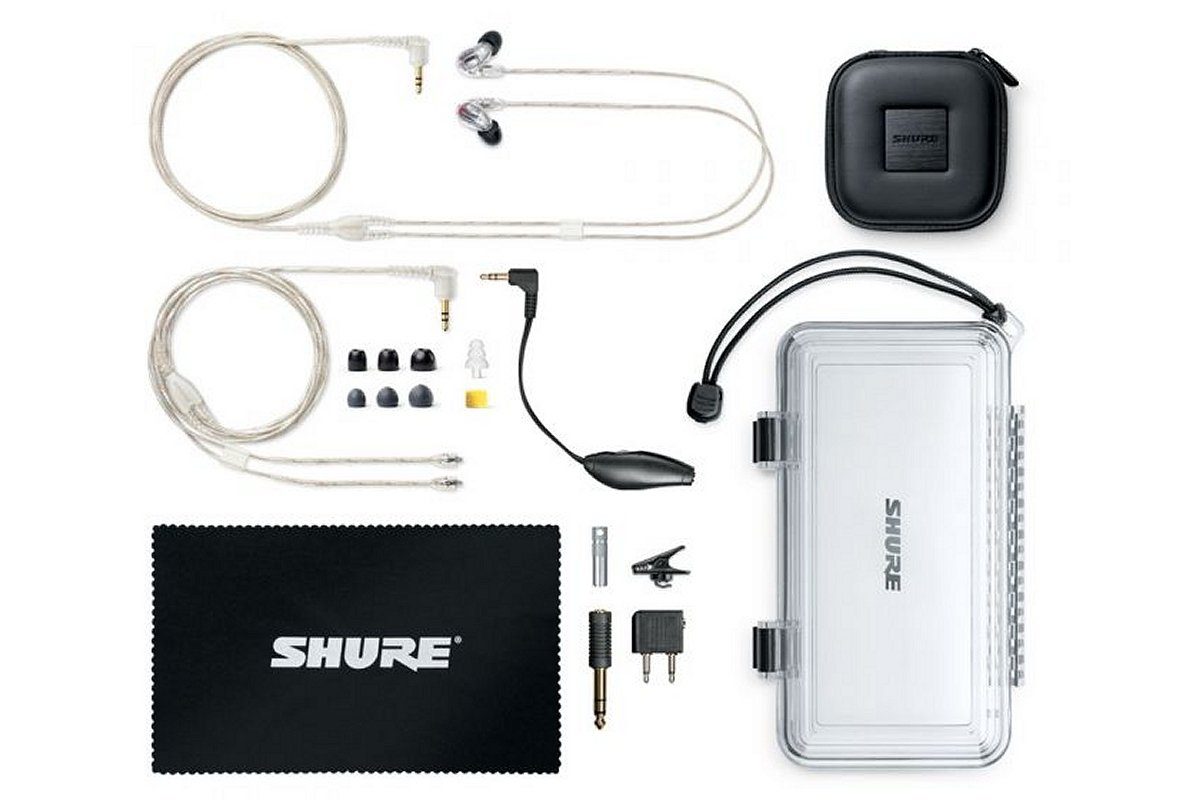
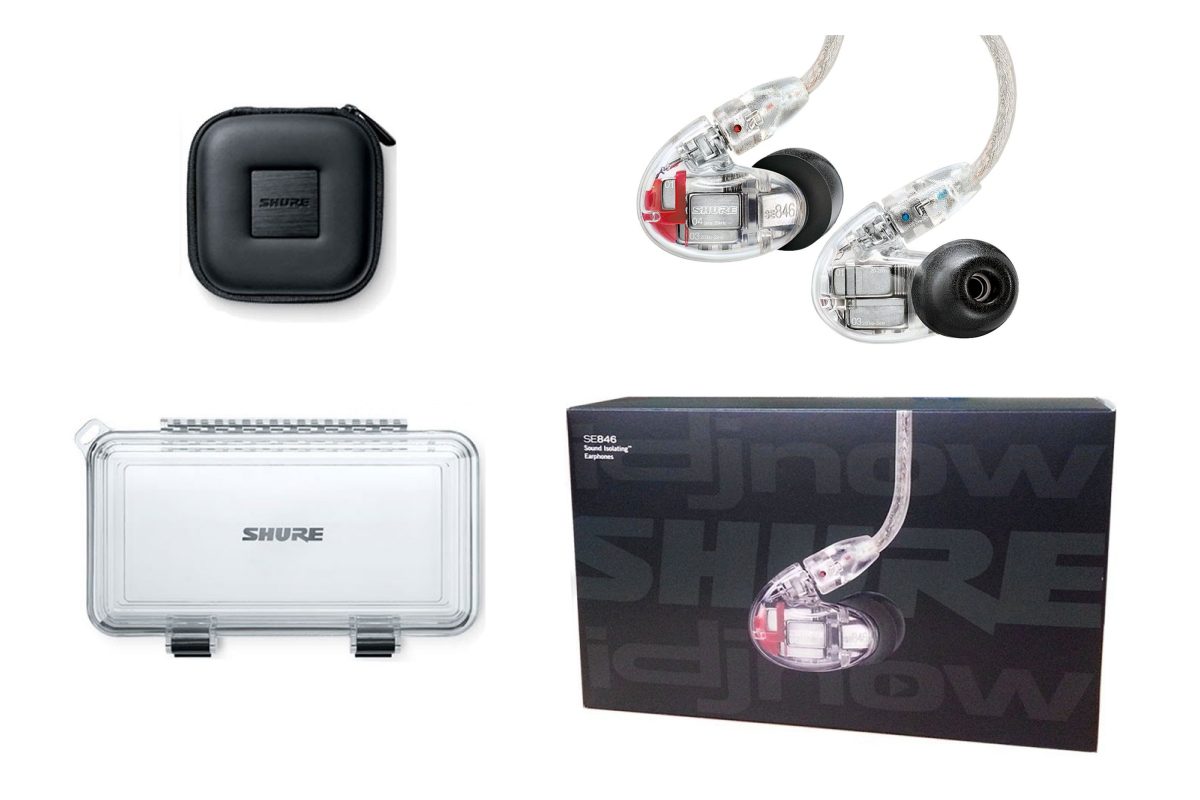
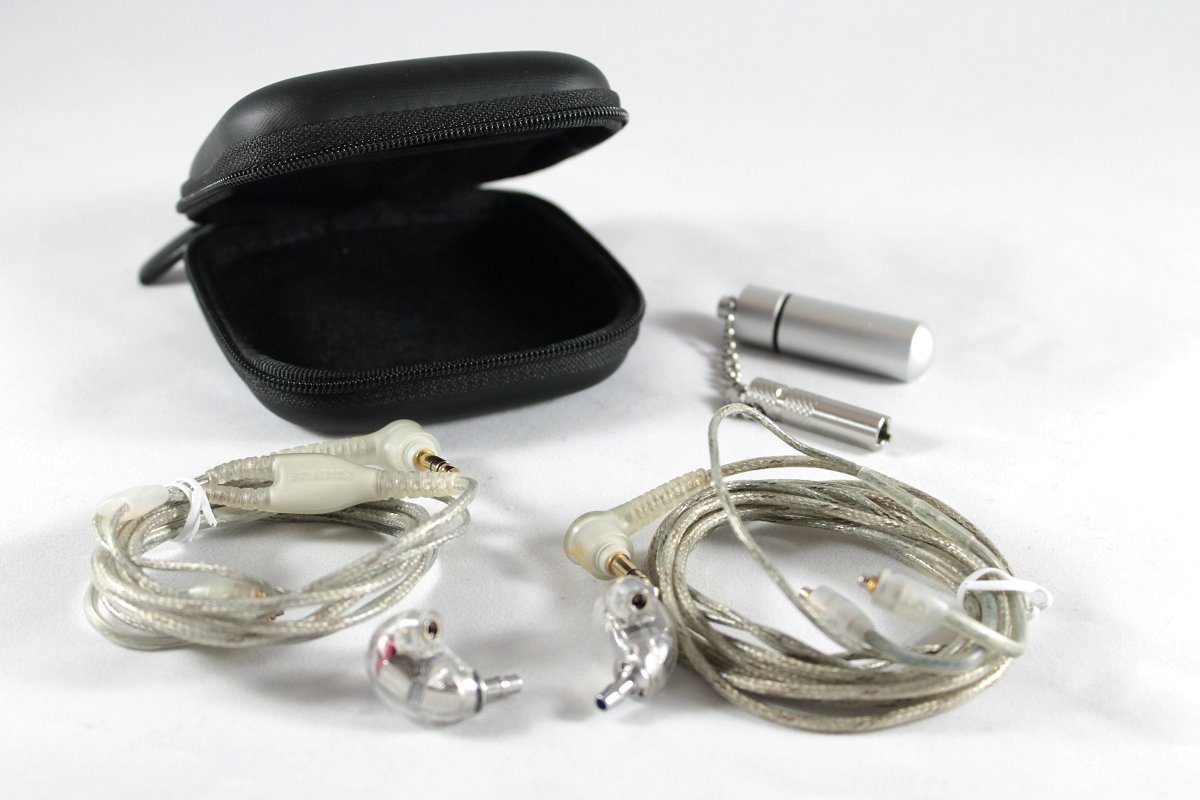
THE TECHNICAL SPECIFICATIONS

MEASUREMENTS
The graphs I use are generated using the Vibro Veritas coupler and ARTA software. Ken Ball (ALO/Campfire) graciously provided me with measurement data which I have used to recalibrate my Veritas so that it mimics an IEC 711 measurement standard (Ken uses two separate BK ear simulators, we measured the same set of IEMs, and I built my calibration curve from shared data). I do not claim that this data is 100% accurate, but it is very consistent, and is as close as I can get to the IEC 711 standard on my budget. I suspect it is slightly down at around 9-10 kHz, but seems reasonably accurate through the rest of the spectrum.
I do not claim that the measurements are in any way more accurate than anyone else’s, but they have been proven to be consistent and I think they should be enough to give a reasonable idea of response – especially if you’ve followed any of my other reviews. When measuring I always use crystal foam tips (so medium bore opening) – and the reason I use them is for very consistent seal and placement depth in the coupler. I use the same amp (E11K) for all my measurements – and output is under 1 ohm. This time for the Shure SE846 (because of the narrow nozzle) I measured using the olive foam tips.

The graphs are provided merely as a point of discussion, and later in the review I’ve included measurements for all filters and comparisons to other IEMs for similar reference.
I’ve measured this pair of SE846 multiple times, and channel matching is very good.
BUILD
External
hure’s SE846 has the same basic external design which has served them well with all of their previous models. It consists of a two piece polycarbonate shell in Shure’s classic peanut shape – which is designed to ergonomically sit in your external ear. The shell is extremely tough (Shure does a lot of stress testing) and the joins are genuinely seamless. The shell measure 22mm in length with a height of 12mm (main body) and depth of 13mm (not including nozzle). There are no edges – the SE846 is perfectly rounded and smooth.
The casing on Rob’s version is transparent – and by that I mean completely transparent. Its like looking through a window into the internals, and I love it. You can see the laser engraving on the drivers, the circuit board with the crossovers, the enclosures for the BAs and also the ground breaking low-pass filter. If transparency isn’t your thing, the shells are also available in black, blue, and bronze.
The nozzle assembly is approx 9-10mm in length, 3mm in width, is located at the upper front of each ear piece and is nicely angled to fit naturally with your ear canals. The nozzles have a well defined lip and are designed to fit T100 Comply foams and Shure’s own excellent Olive tips. The nozzle also houses the filter assembly (so you can change frequency response). This is achieved through a screwed removable nozzle/filter assembly – which I’ll explain a little later in the review.

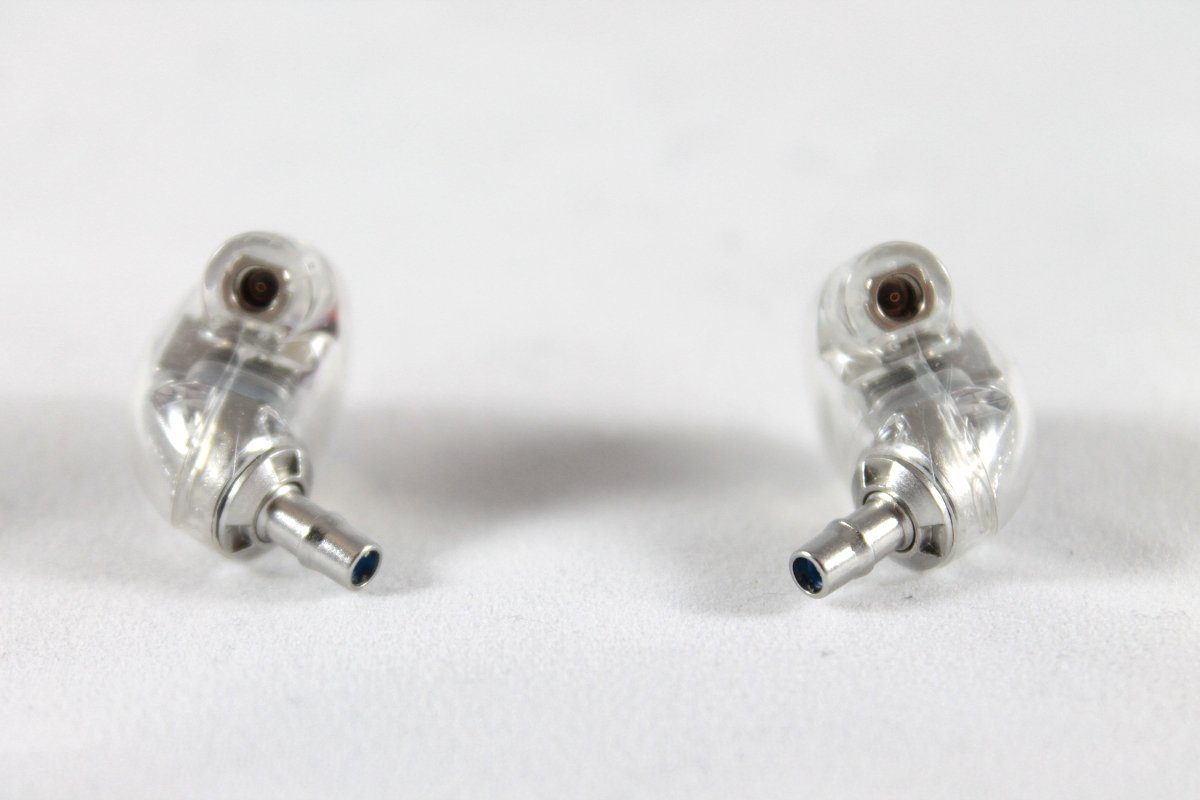

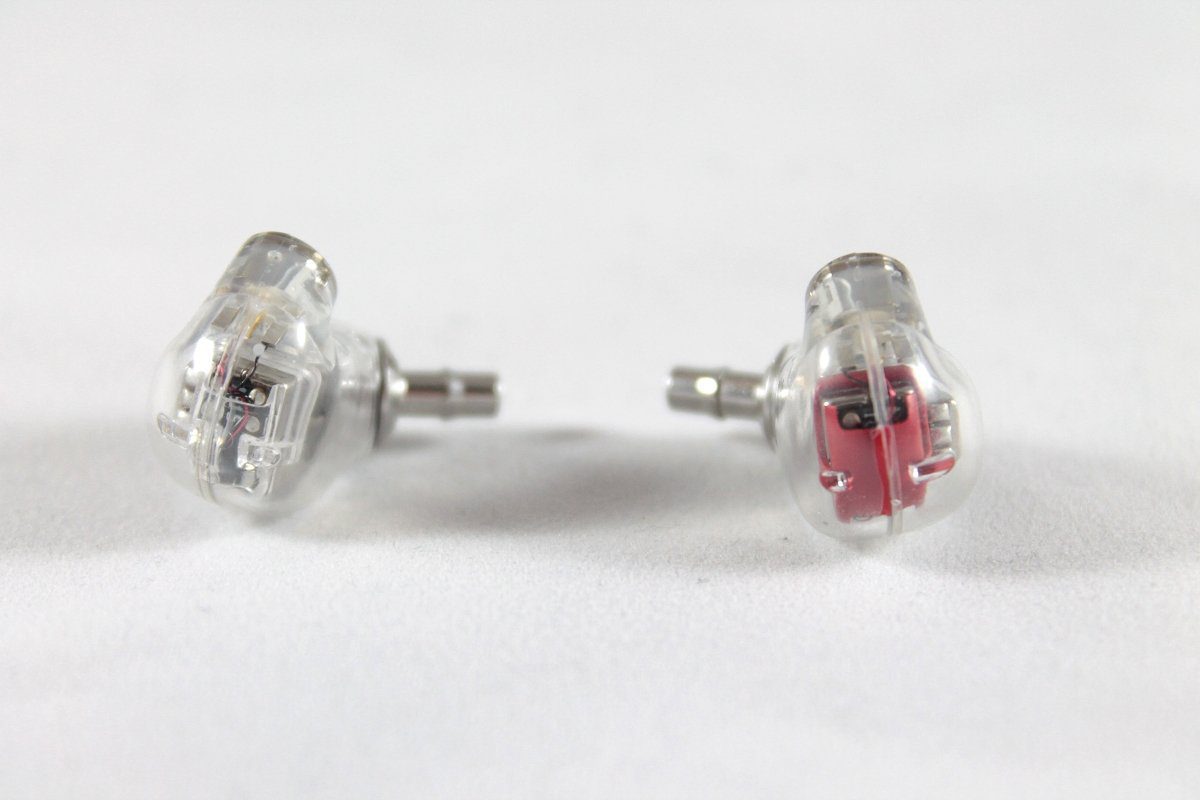
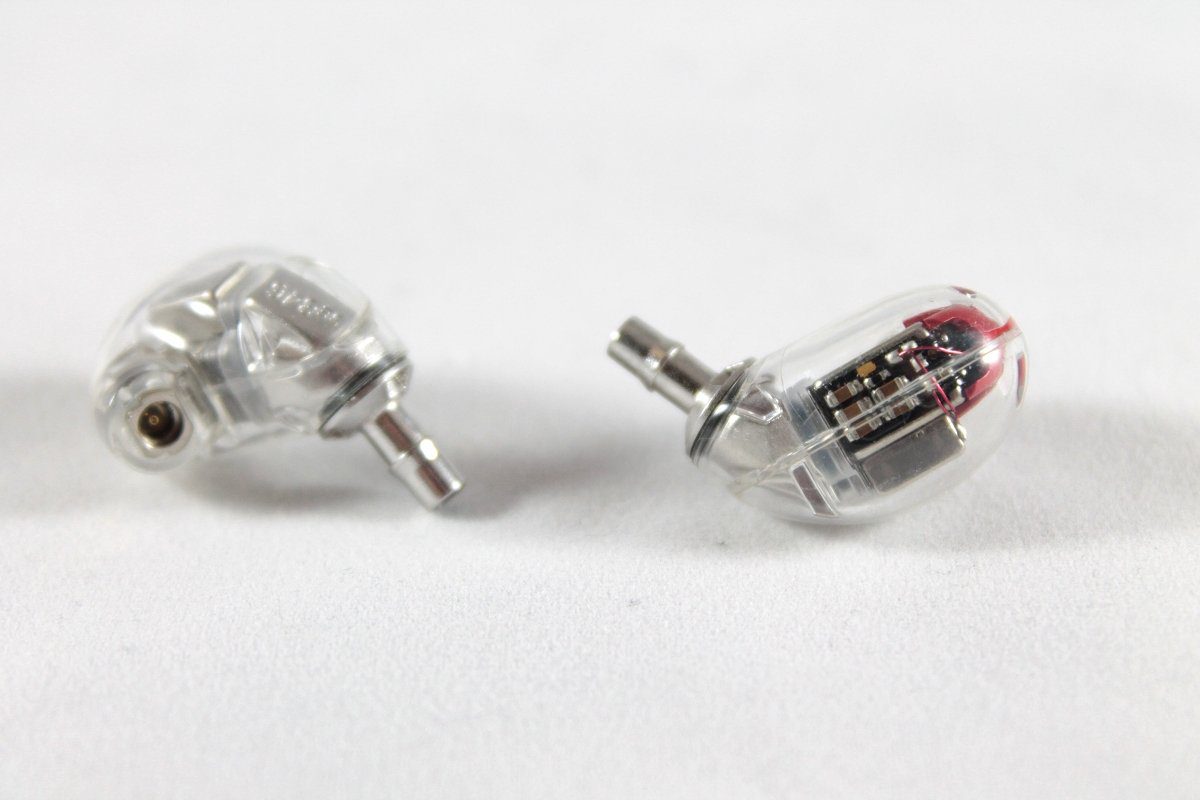
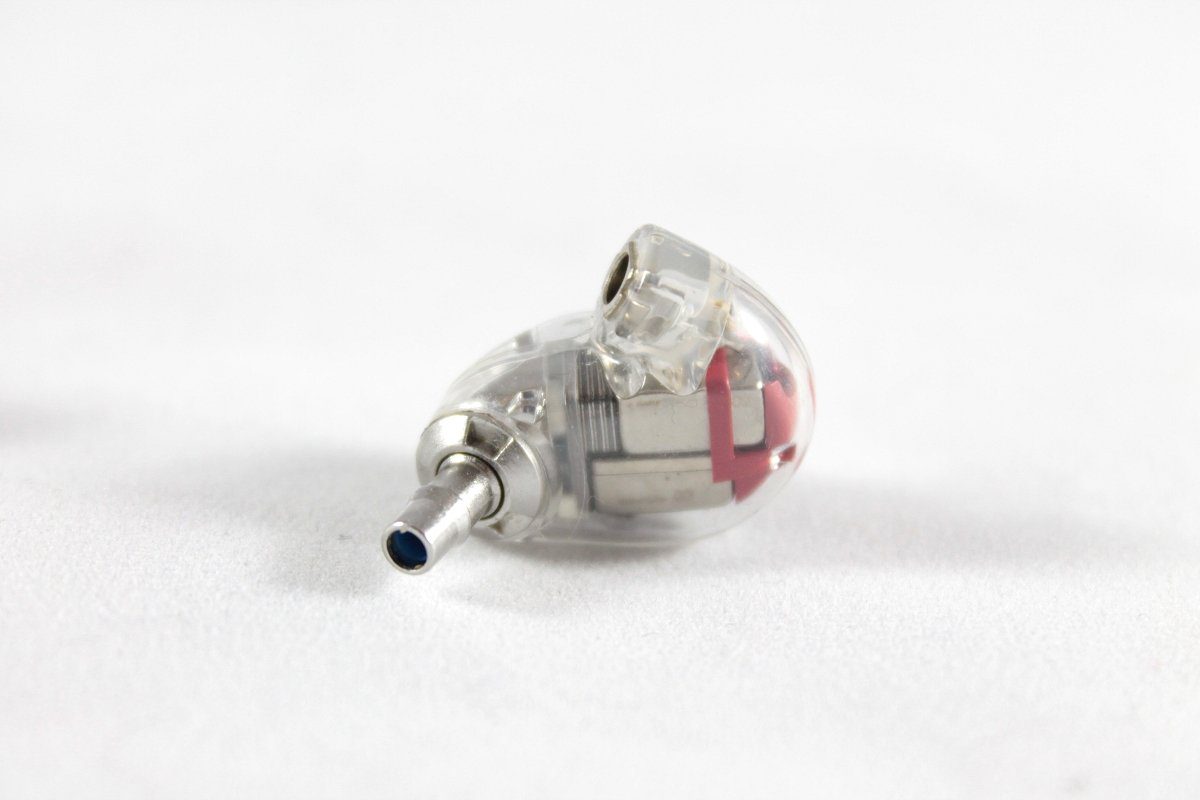

Cable
At the top rear of the shell is a contoured MMCX socket to house the removable cable system. The actual MMCX connector is coated with nickel plating. There are two cables provided – both single-ended with MMCX connectors – but at different lengths. One is the more standard 1.2m (116cm to be exact), and the other a longer 1.6m (162 cm).
The cables consist of a copper core encased in a braided internal sheath which is also lined with Kevlar for additional strength. This is then covered with an outer TPU (thermoplastic polyurethane) sheath.
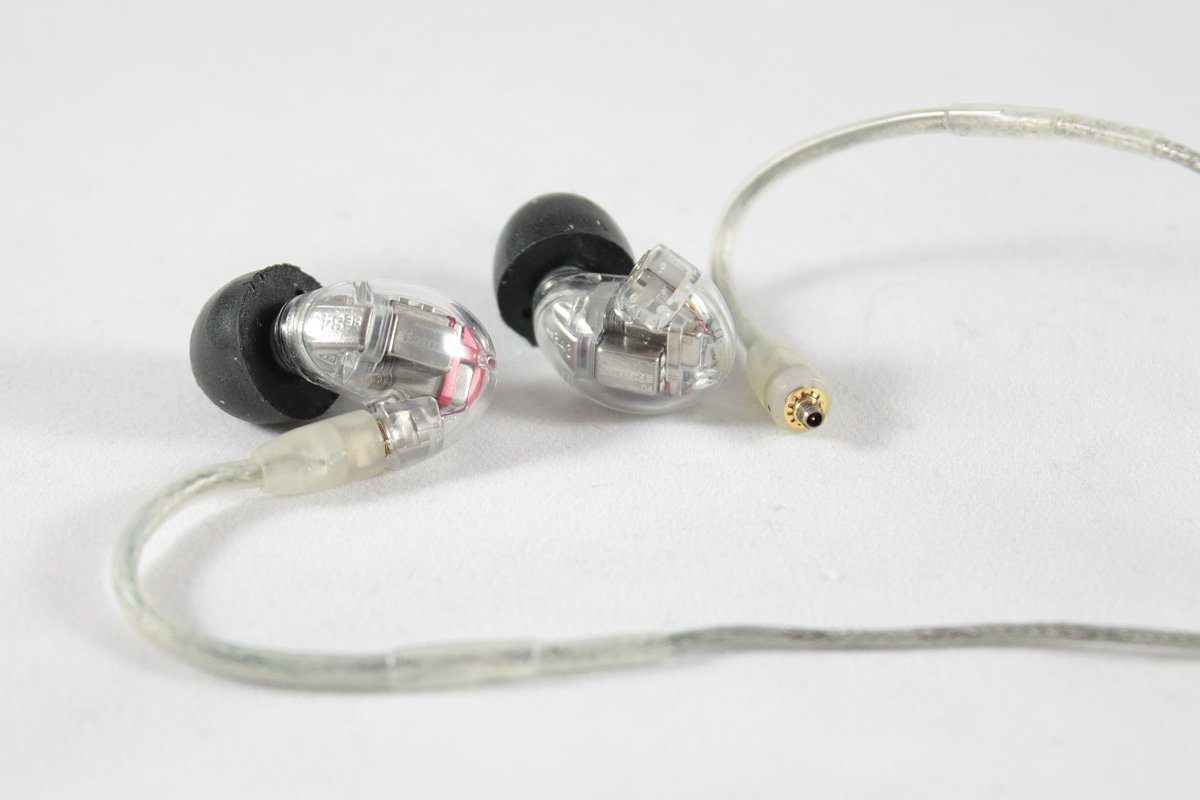


The end result is a cable which is very malleable, resistant to tangling, and has quite low microphonics.
The connectors are clearly marked left (blue) and right (red) with dots on the connector housings. From the connectors is a 70mm form-able ear guide which I have found really easy to use, and has not been a hassle with my glasses (YMMV). The y-split is plastic with excellent strain relief, and there is a clear plastic chin slider/cinch – which again works very well. The jack is right angled, 3.5mm and gold plated – again with excellent strain relief and also smart-phone friendly.
Internal
As I mentioned earlier, the shell is translucent, and it is easy to see the BA drivers and cross-over circuits. The design (internally) has the top (dual BA) bass drivers feeding directly into the low-pass filter. Below and on one side are the mid-range and upper frequency BA drivers. The circuit board with crossovers sits right at the bottom. Positioning and soldering are as clean and neat as I’ve seen in any IEM.
The technology breakthrough for Shure with the SE846 is the low-pass filter or wave-guide which they advise accomplishes acoustically what a sub-woofer accomplishes electrically. The aim was to roll-off low frequencies at a level that they could boost the energy and not have interference with the mid and high BA drivers – basically target the sub-bass.
The other major change for the SE846 was the inclusion or removable nozzles housing the tunable filter system.

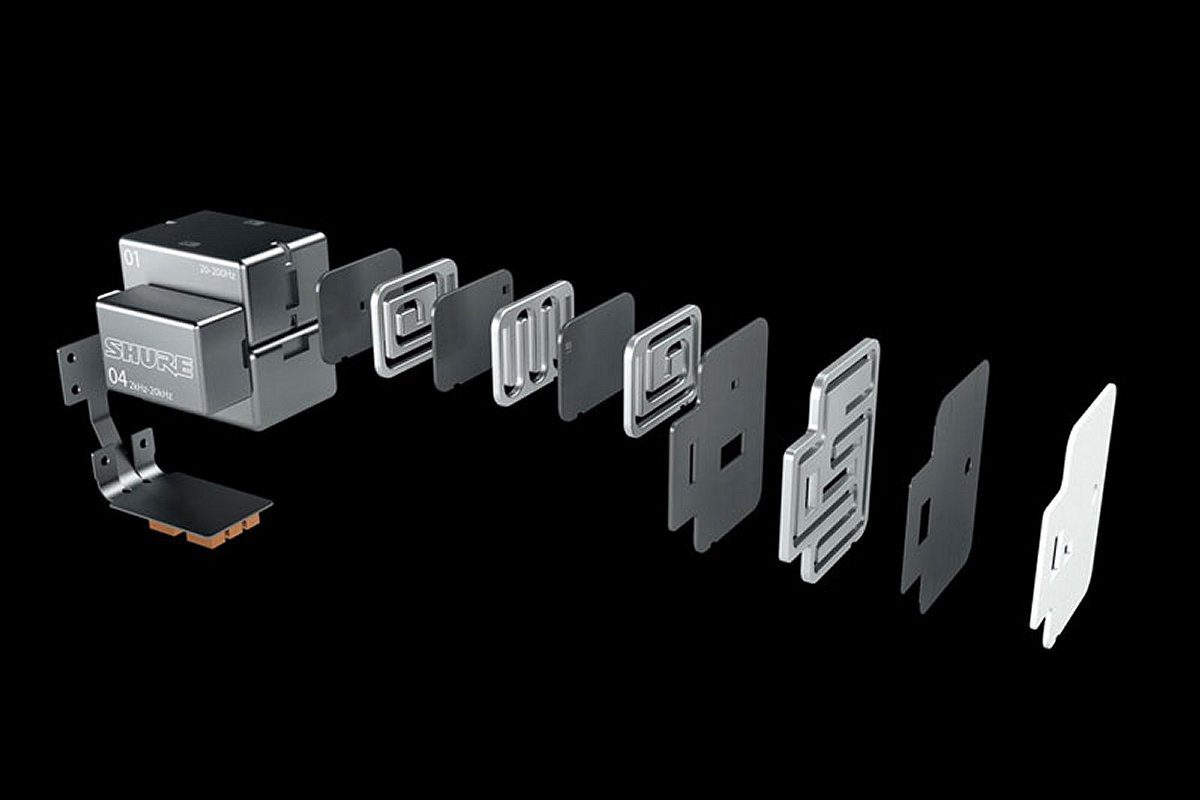
FIT / COMFORT / ISOLATION
Isolation with the SE846 will depend on the seal you achieve and type of tip (possibly also the insertion depth you can achieve – although generally it will be somewhat shallow). I’m using large Shure Olives, and isolation is very good. Shure advertises up to 37 dB attenuation, and for my fit, I’m achieving most (if not all) of it. With music playing, I have no problems using these in public transport, and they are excellent for use on an aeroplane.
Comfort for me is excellent – the SE846 is a design which simply disappears for me when worn. In fact these rate up there with the most comfortable IEMs I’ve tried. They sit well within my outer ear (inside the external ear cavity – between tragus and anti-tragus), and are extremely easy to sleep in.
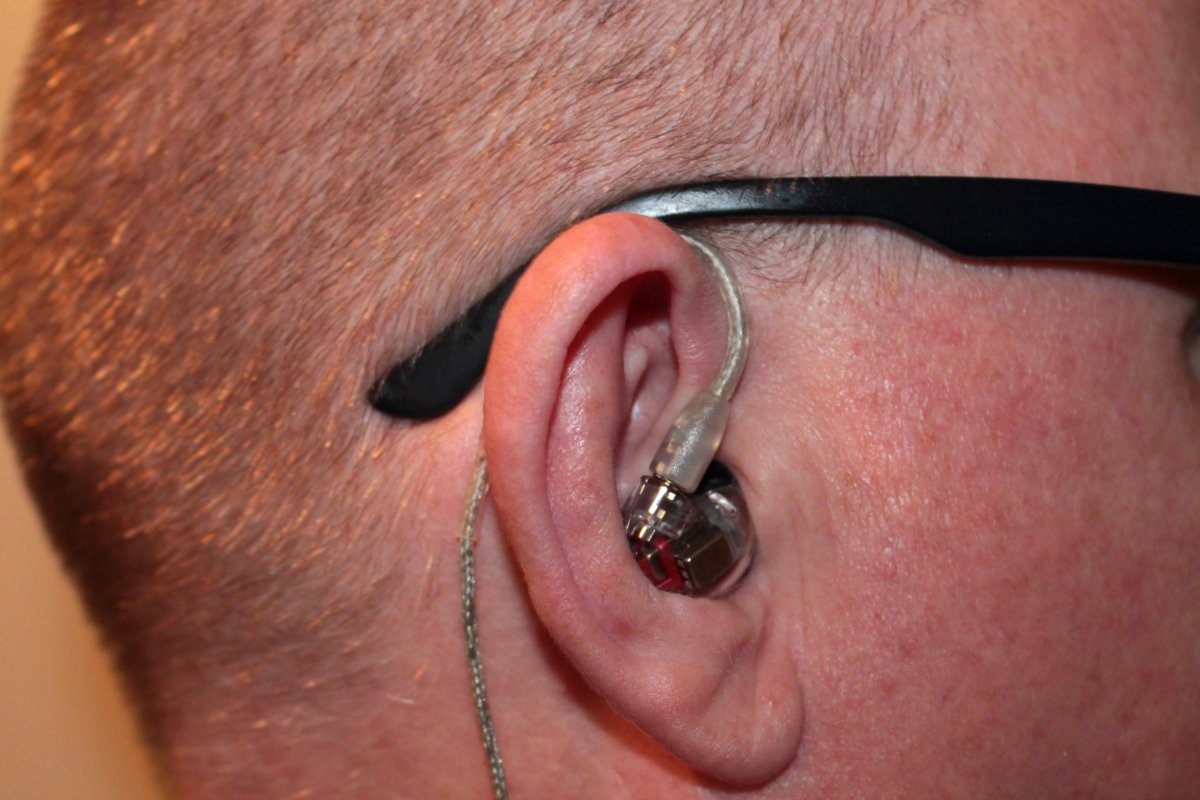
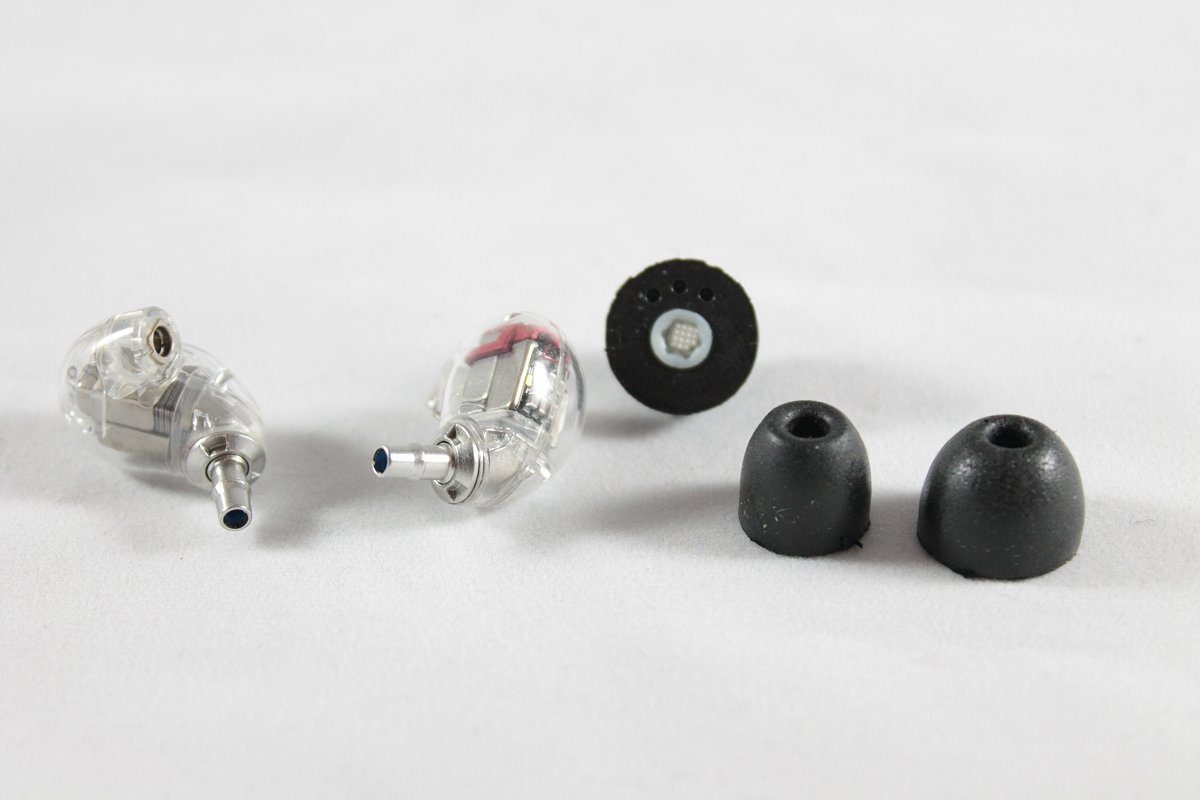
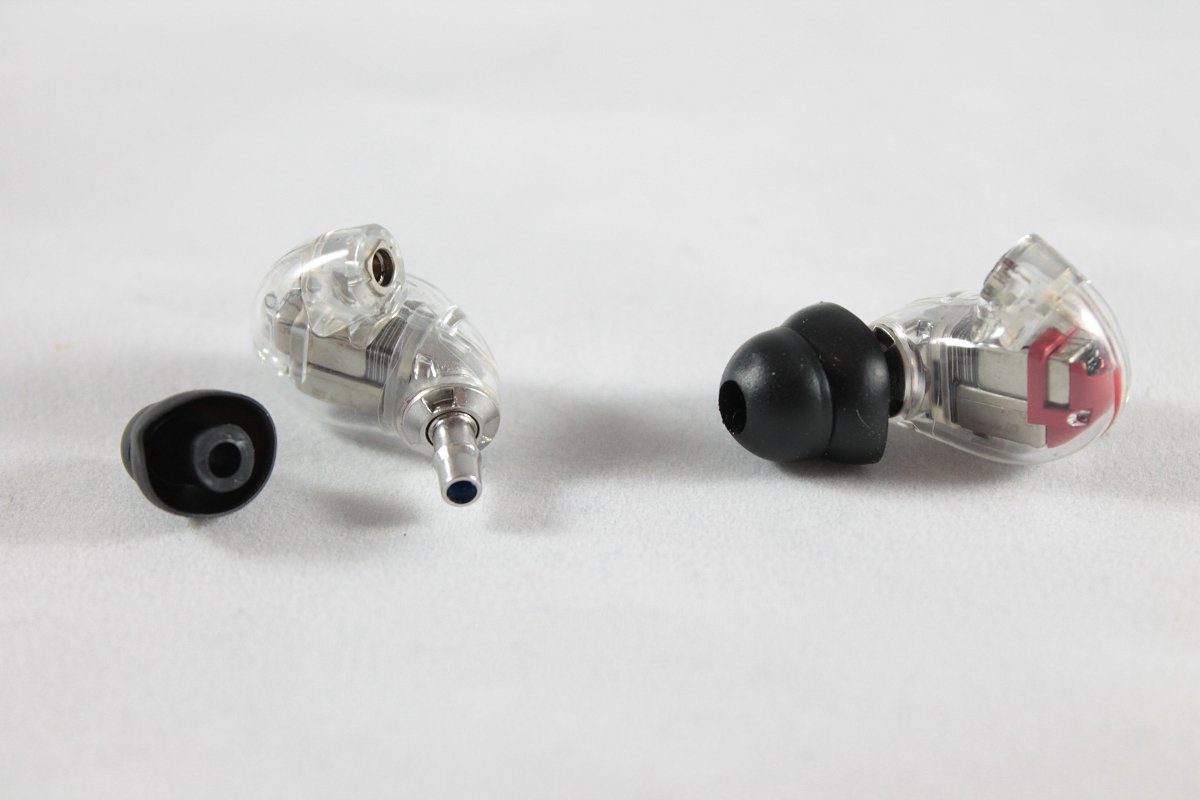
I have one ear canal slightly different to the other one (my right is very slightly smaller) – so I tend to find that usually single silicon flanges don’t fit overly well and shallow fitting IEMs can be problematic. The SE846 is a relatively shallow fitting IEM – but with the longer nozzles and Shure’s Olive foam tips – I can get a perfect seal every time.
Tip choice may be limited for those who like to tip roll, due to the narrow nozzle. The only tips which would fit (from my extensive collection) were Shure’s own tips, and also some dual flanges from Earsonics which for me were a really good substitute for the foams.
FILTERS
This is always a hard one to describe subjectively as it does ultimately come down to preference. Without measurements, it is very easy for our brains to throw a filter over everything we hear. Because of this, we can grow quickly accustomed to an IEM’s tonality and lose sight of its performance against the other options.
The front nozzles double as the filters. They are 10mm in length, 3mm in diameter and with a lip halfway down the nozzle. They consist of the filter, the nozzle tube and a threaded cap to fit the whole assembly to the front of the SE846. They also have a pre-fitted washer to maintain seal and integrity. They are pretty easy to change out, and Shure includes a handy carry case with a small tool for tightening and loosening the cap.
Shure describes the three filters as warm (black), balanced (blue) and bright (white). One small note here – Rob’s pair of blue filters have been modified (TrishD mod). This involves adjusting the internal acoustic foam, which gives a little more top end extension. Rather than trying to correct this – I have left the filters as they are for this review.

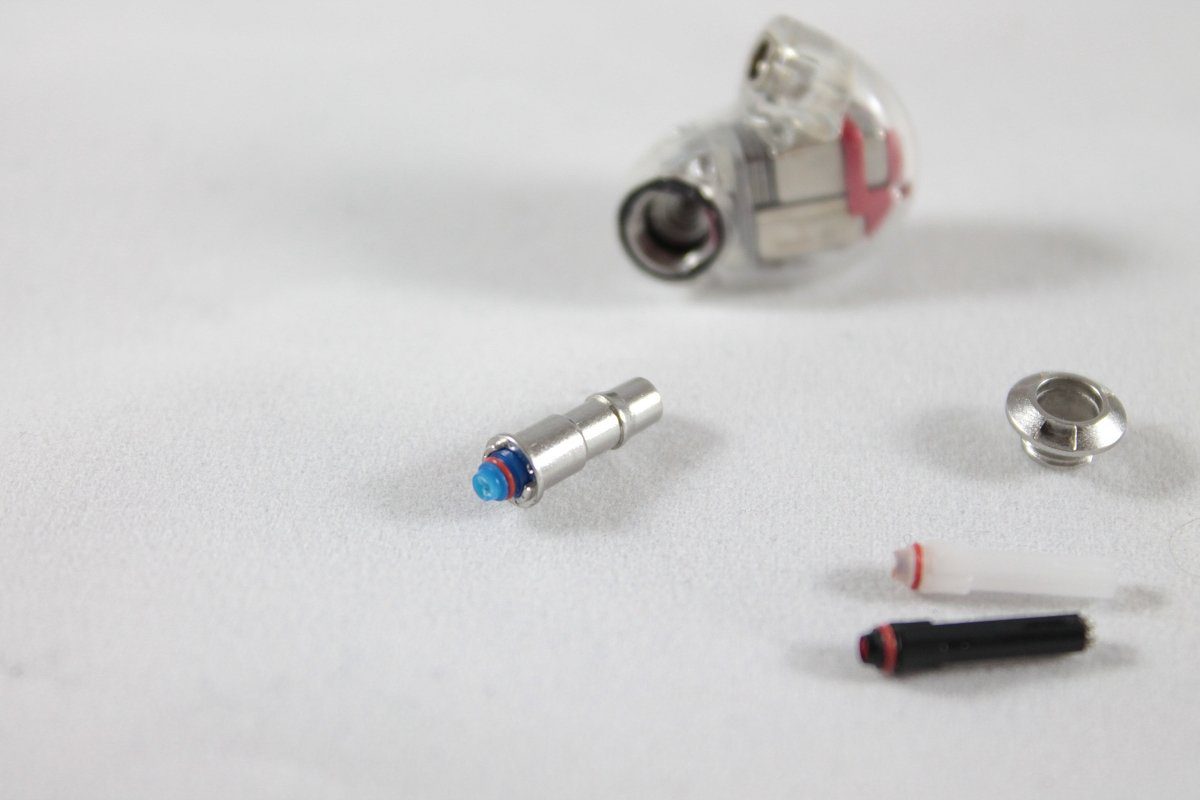

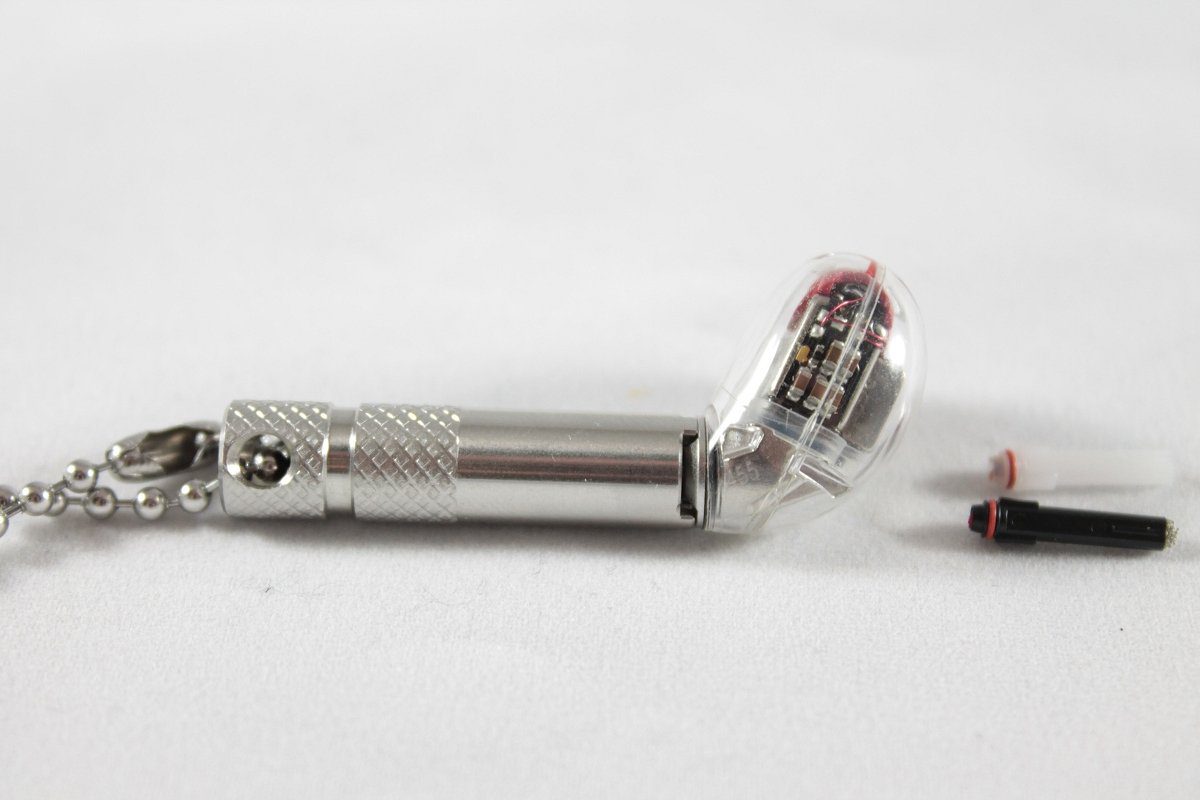
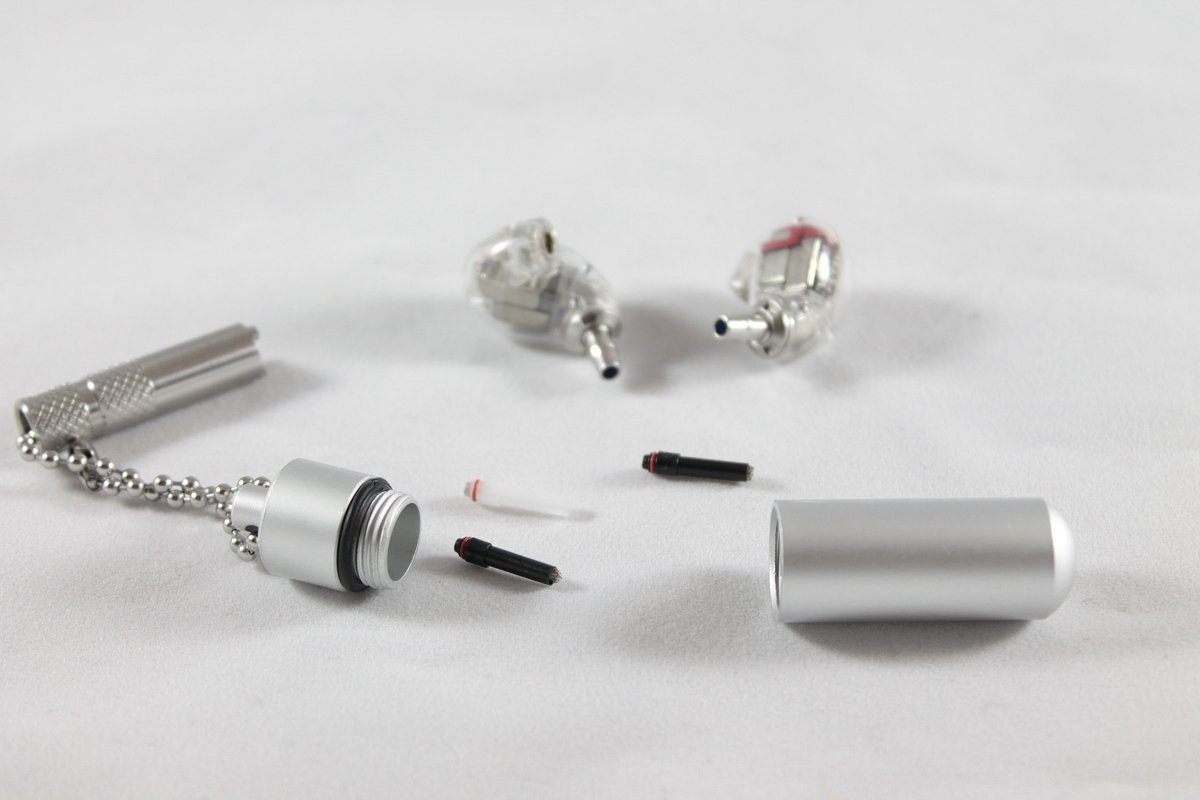
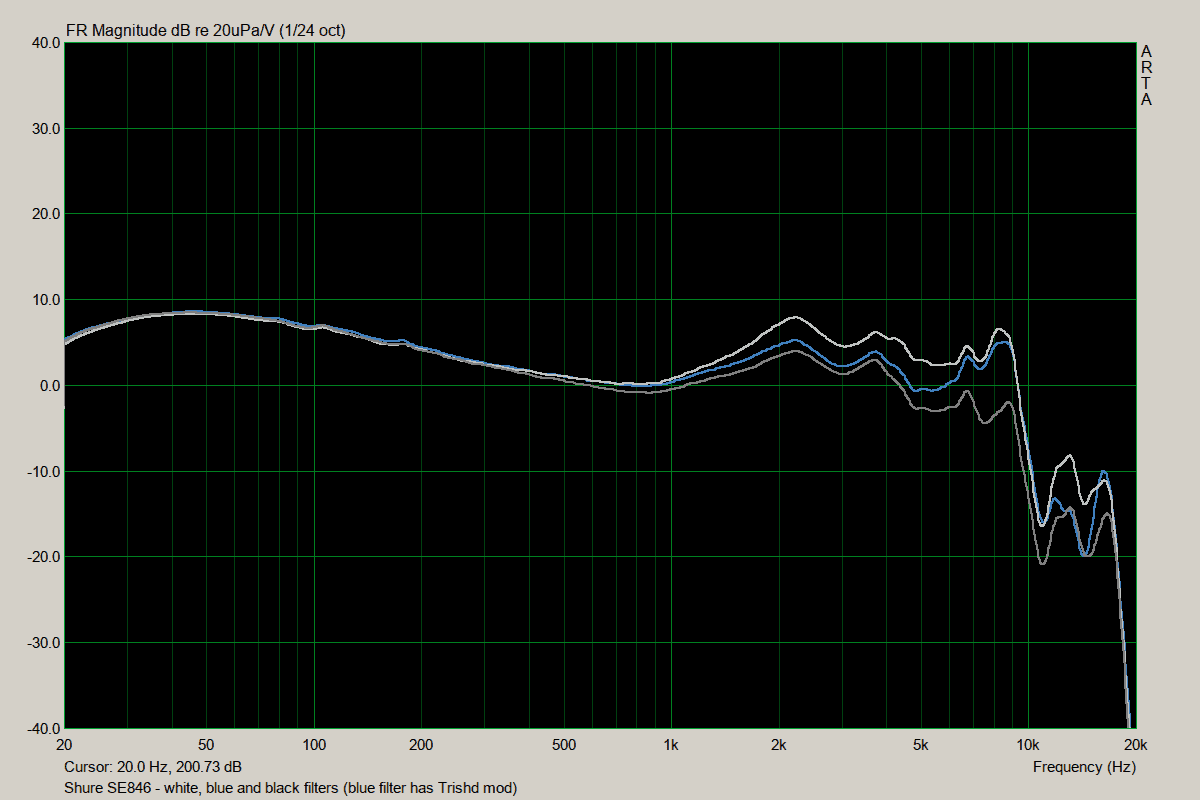
I measured the filters, and they showed exactly the same frequency response from 20-500Hz, and a change in overall response between ~ 2 – 9 kHz (with some residual change both before and after). I would surmise that without the TrishD mod, the blue filter at 7-9 kHz would sit pretty much in between the white and black. The changes according to Shure are about 2.5-3 dB per filter, and IMO they have nailed this. The band in upper mids and lower treble is wide enough to have really noticeable sonic change, and the changes are spaced enough to be useful.
The three filters are absolutely as advertised. The black is quite rolled off in the treble, and for me is warm and bordering on dark (for my preferences it is just dull). Those with a real aversion to treble may quite like this. The blue is indeed very balanced, and with the mod has enough lower treble to supply a great amount of detail and sparkle. The white is more coloured with a much more forward upper mid-range, and also a sheen across the lower treble.
SOUND QUALITY
My testing for this section was done with the FiiO X7ii (AM3A module), no EQ, blue (balanced) filters and Shure Olives. I used the X7ii simply because it provides both a very transparent window to the music with low impedance, and also more than enough power. No EQ was used.
For the record – on most tracks, the volume level on the X7ii (paired with AM3a) was ~35-40/120 Single Ended (on low gain) which was giving me an average SPL around 65-75 dB (track dependent). Tracks used were across a variety of genres – and can be viewed in this list.
Relativities
- Sub-bass – wonderful extension, elevated and prominent without overpowering other frequency bands. The SE846 has masterful rumble even at my lower listening levels, and for my personal tastes it is well balanced in the overall frequency. With sub-bass dominant tracks (like Lorde’s Royals) there is no noticeable bleed (or masking) into the lower mid-range. What I love about the sub-bass is that you get the perfect balance (for my tastes) between impact and speed.
- Mid-bass – good impact, and slightly stepped back compared to the sub-bass, but still with good body. There is reasonable thump and this is very good quality, typically quick BA bass. Definition and texture is good and I’m quite happy even with the overall timbre.
- Lower mid-range – there is a slight recession compared to mid-bass, but its hardly noticeable and seems completely natural. Male vocals are excellent – rich with fantastic timbre and tone. There is a feeling of real richness and body which has been lacking on many IEMs I’ve reviewed recently, and these are easily an equal favourite to the 64Audio U10 in this area.
- Upper mid-range – slightly elevated compared to lower mid-range (mainly in the 2-3 kHz area, which really helps add that sweetness in the presence area for female vocals. The nice thing about this tuning is that it isn’t overdone and there is a quite a cohesive interchange from low to upper mids. Not as aggressive as the SE535 LE – these are upper-mids to die for!
- Lower treble is extended out to around 9 kHz and there is a little emphasis in the 6-9 kHz area which gives added definition and overtones to cymbals. It’s not overdone though (for my personal tastes) and for me the overall feeling is one of balance.
- Upper treble – quite rolled off. Its hard for me to judge this area, because my hearing tops out around 14kHz nowadays, and the measuring equipment is not accurate enough from about 9 kHz up. No signs of brittleness, and I personally don’t find anything missing.
Resolution / Detail / Clarity
- Clarity is excellent, and there is distinct detail in all of my usual test tracks. With Dire Straits “Sultans of Swing”, the micro details such as drumstick clicks are easily heard, and there is no signs of masking from the bass guitar. Pink Floyd’s “Money” is likewise phenomenal with every detail of the registers present, yet perfectly mingled within the music.
- Cymbals hits (especially hi-hats and crash-cymbals) are present, and the trailing decay is not only audible, but beautifully sustained. My test track for this is Pearl Jam’s EWBTCIAST, and the contrast here between the depth, richness and timbre of Vedders vocals and the delicacy of the cymbal decay is really something I’ve only heard in headphones until now.
- Portico Quartet’s “Ruins” is a good track for checking the overall balance on hi-hat taps and general cymbal decay, and the balance in this track is excellent. Cymbal brushes are again delicate and sustained. The surprising thing here is the depth of detail, but also the strength of the double bass. Cohesive – yes!
Sound-stage, Imaging
- My usual first track for checking width, depth and shape of perceived sound-stage is Amber Rubarth’s “Tundra”. What really impresses me is the projection of the violin outside the periphery of my head, while the percussion and cello are clean and clearly closer.
- Directionally the track is consistent and stage shape has nice balance of both depth and width.
- Perception of stage is good for an IEM, and the imaging of all 3 instruments is very precise with great separation.
- I use the applause sections of “Dante’s Prayer” and Lakme’s “Flower Duet” for a feeling of immersion. Few IEMs can give you a real sense of being in the audience. The SE846 manages it with aplomb in both tracks. There is a life-like sense of of flow around me, and once again there is a sense of space.
- The last go-to track is Amanda Marshal’s “Let it Rain” which has a natural 3 dimensional feel (the way the track was miked). The SE846 handles it masterfully, and while there is some sibilance present (its quite a hotly mastered track – and it is present in the recording), its not as sharp or as pronounced as with other IEMs.
Strengths
- Overall balance end to end in the frequency response.
- Bass speed, impact, timbre and definition
- Sense of staging – both shape and overall size
- Very good at lower volumes with good clarity
- Female vocals have a wonderful touch of euphony without being overemphasised or unnatural.
- Male vocals are full, rich, and display very good timbre.
Weaknesses
- There is some roll-off in the higher registers. If you can hear this and its important to you, it may be an issue. Personally for me – I don’t find this a detraction.
- My daughter noticed some hiss with higher impedance sources (or devices with a higher noise floor). Personally I haven’t noticed – mainly because my tinnitus masks it.
AMPLIFICATION REQUIREMENTS
The SE846 is easily powered straight out of any of the portable devices I have, and I haven’t experienced any issues with the iPhone ES, or any of the FiiO DAPs.
I’m at my usual 65-75dB listening level (with typical pop/rock songs) on the iPhone ES at a volume level of around 25-30%. I haven’t noticed any changes to the SE846 from application of additional power through extra amping, and if anything it’s low impedance and high sensitivity will be the deciding factor on whether or not to consider amping (ie if your output source has higher impedance, you’ll need a low output impedance amp to correct it).
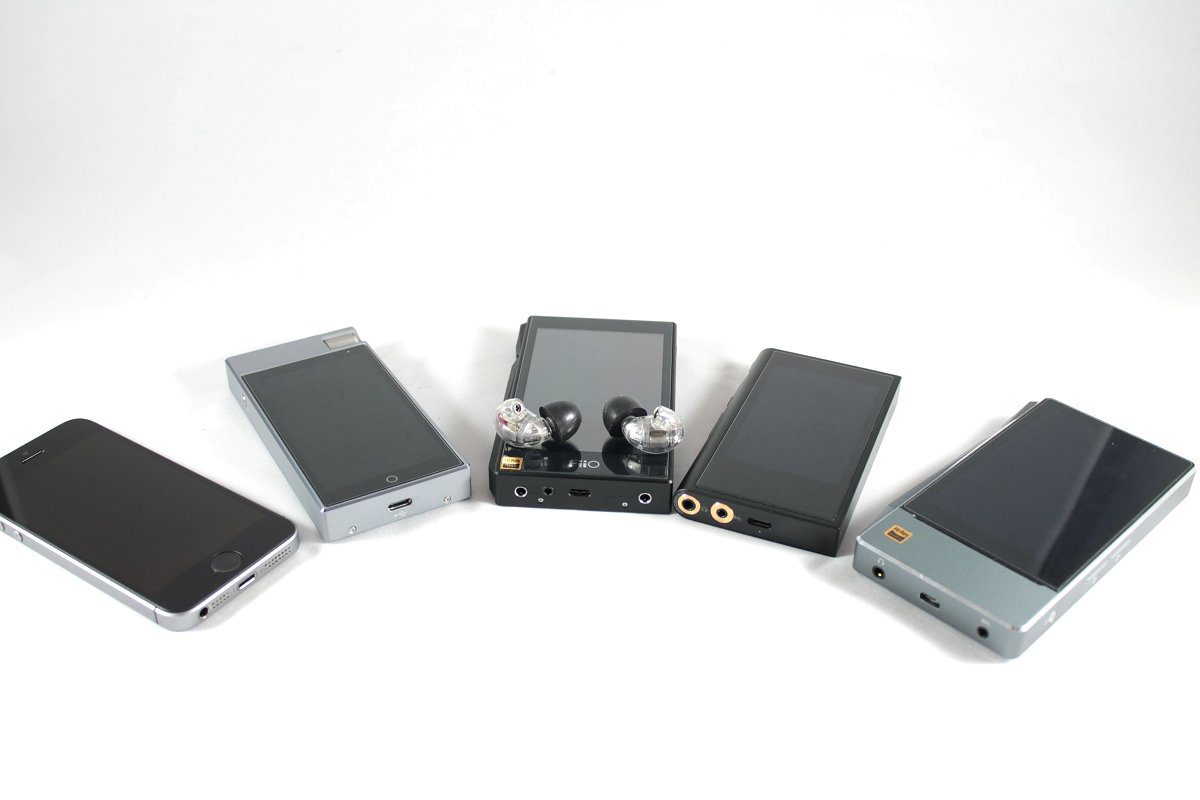
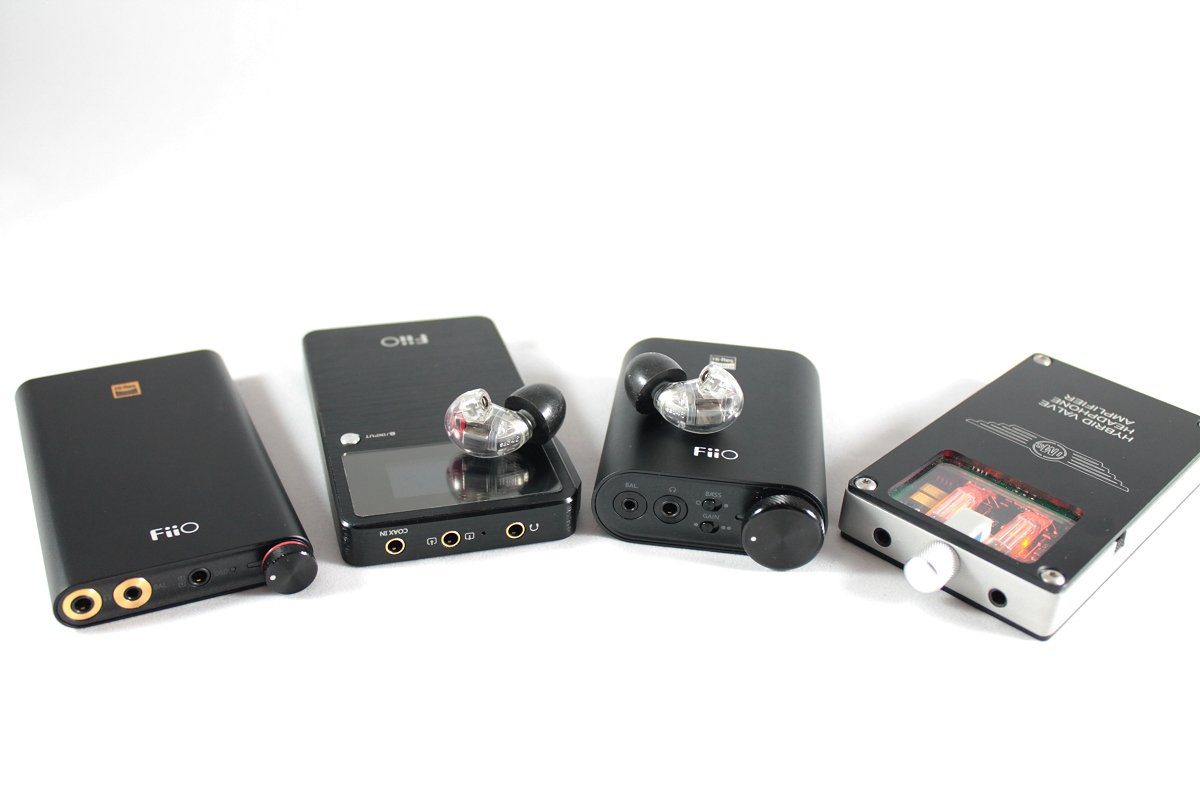
RESPONSE TO EQ?
Not even going to try. There is nothing about the frequency response I’d like to change, and because the filters are quite versatile.
COMPARISON WITH OTHER IEMS
The SE846 is Shure’s current BA based flagship, and although it sits below many of the ++ 1K IEMs today, I wanted to compare it to some similarly priced higher end IEMs I currently have. The appropriate comparisons for me included the LZ Big Dipper, Earsonic’s ES3 and ES5, 64 Audio’s U10 and HiFiman’s flagship RE2000.
These comparisons were all done without EQ, using the FiiO X7ii, and volume matched using a calibrated SPL meter and fixed 1kHz test tone first. These are very subjective comparisons. Pricing was taken from Amazon in USD or Penon Audio (Nov 2018).
Shure SE846 (USD 799) vs Earsonics ES3 (USD 599)
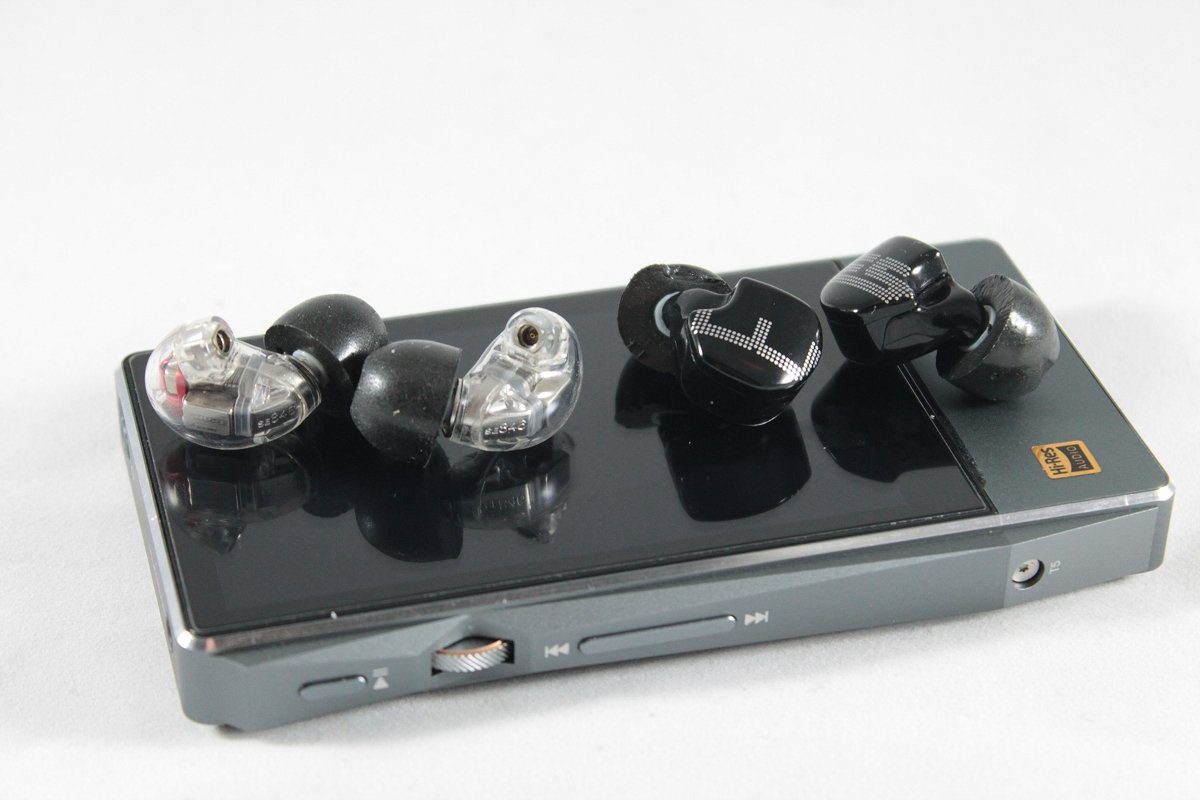
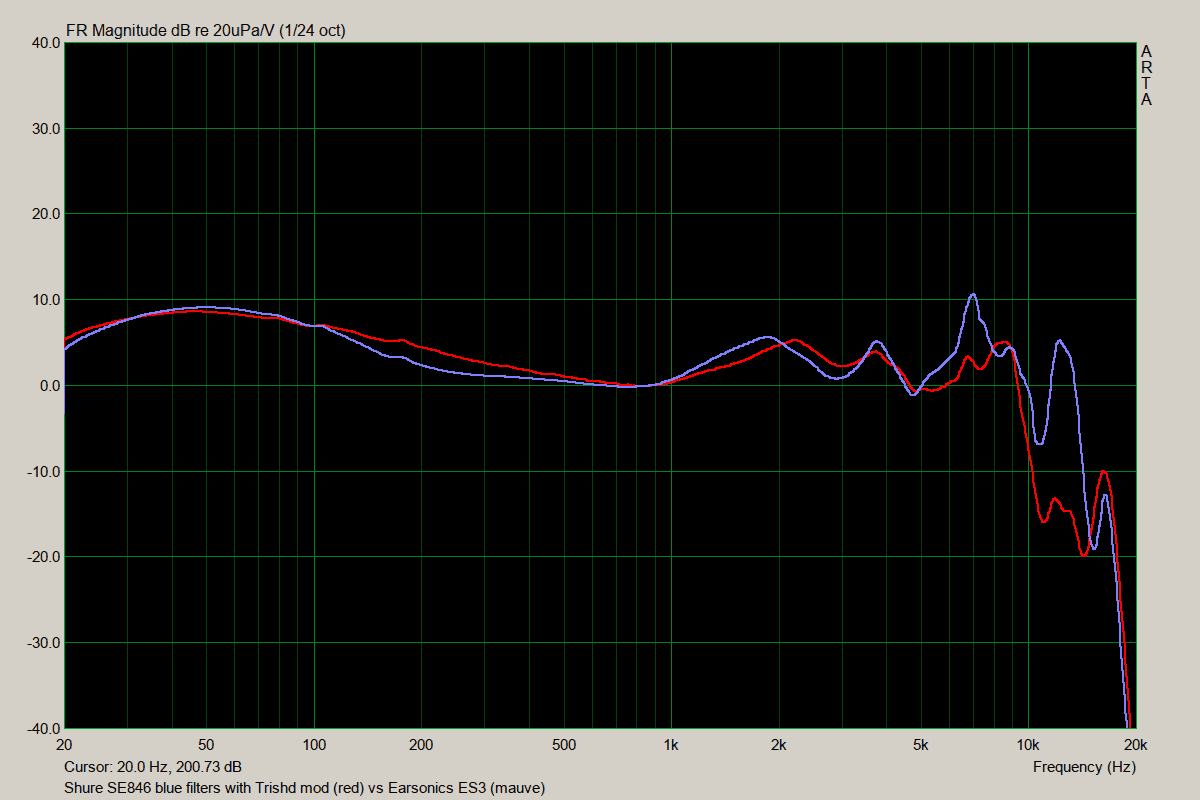
Build
Both IEMs are extremely well built with housings made from a dense resin or polycarbonite. The ES3 has a little less width and a little less height, but both are nicely ergonomic. The SE846 has a choice of tuning filters which do affect the upper mids and lower treble quite nicely. The ES3 has internal acoustic chambering. The SE846 has the excellent and quite unique low pass filter system which really does change bass impact.
Cables
The ES3 has the 2 pin twisted pair to twisted triple single-ended cable. Shure uses MMCX and includes 2 cables – both Kevlar coated 3.5mm terminated but in different lengths (one short and one long). The ES3 cable is a little more manageable, while the SE846 is more sturdy.
Accessories
Similar number of tips, but the SE846 has more adaptors (including 2 prong airline), 2 cases and of course the filters.
Comfort / Ergonomics
Both are extremely comfortable and very ergonomic. This is a toss up overall. The SE846 does tend to isolate slightly better though.
Overall Sound Quality
These two are very, very close in overall signature. The SE846 has more bass impact, and is slightly richer in the lower mid-range. The ES3 has a very slightly leaner overall signature, and I think this an be mainly attributed to the very flat mid-bass. The ES3 has a little more emphasis in the lower treble, especially in the 7 kHz presence area. Both have excellent transparency and very similar staging presence and size.
My Preference
While its pretty hard to go past the price difference when looking at 2 earphones with such a similar signature, the real question is whether the differences are worth it. What the Shure SE846 manages to deliver is the more natural overall tonality where the ES3 (while still excellent) is just a little more coloured. I could definitely live with the ES3 and would not be disappointed if told it was to be my only IEM. But despite the similarities, I’d still pay the extra for the SE846 – just simply for that more natural tonal balance.
Shure SE846 (USD 799) vs LZ Big Dipper (USD 860 – 3 switch)
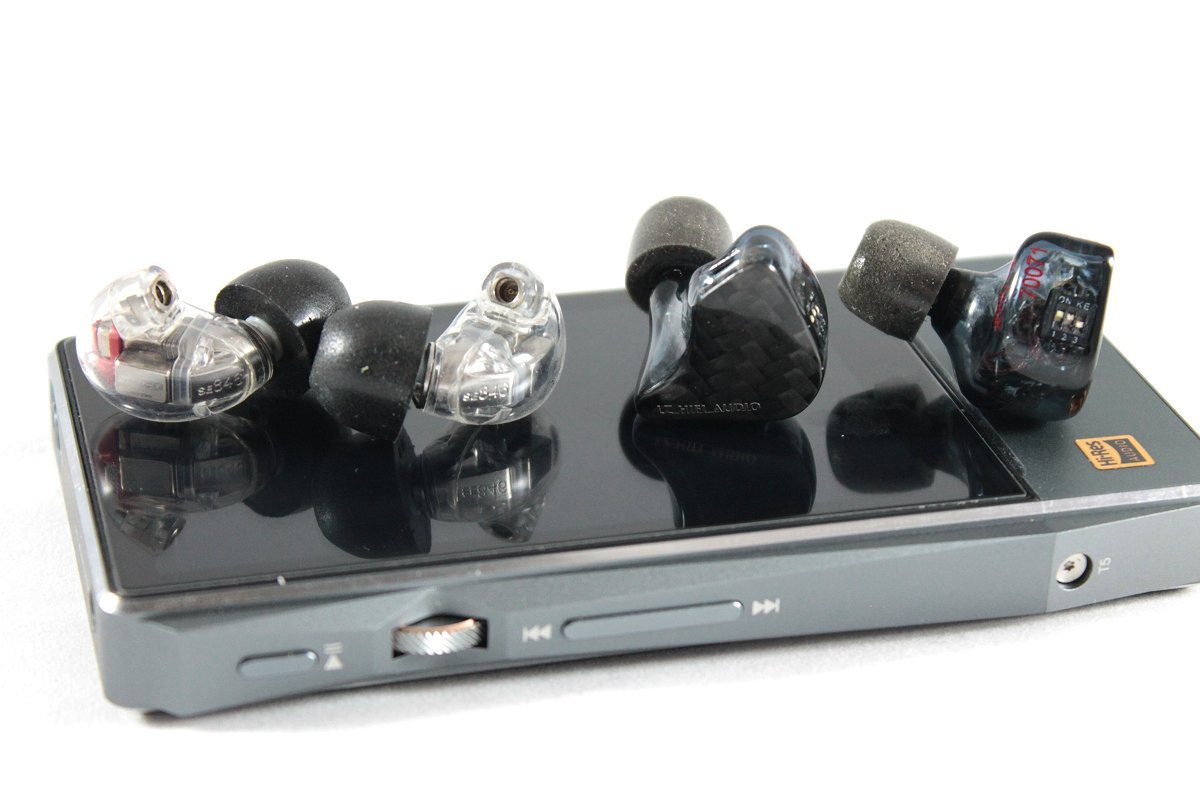
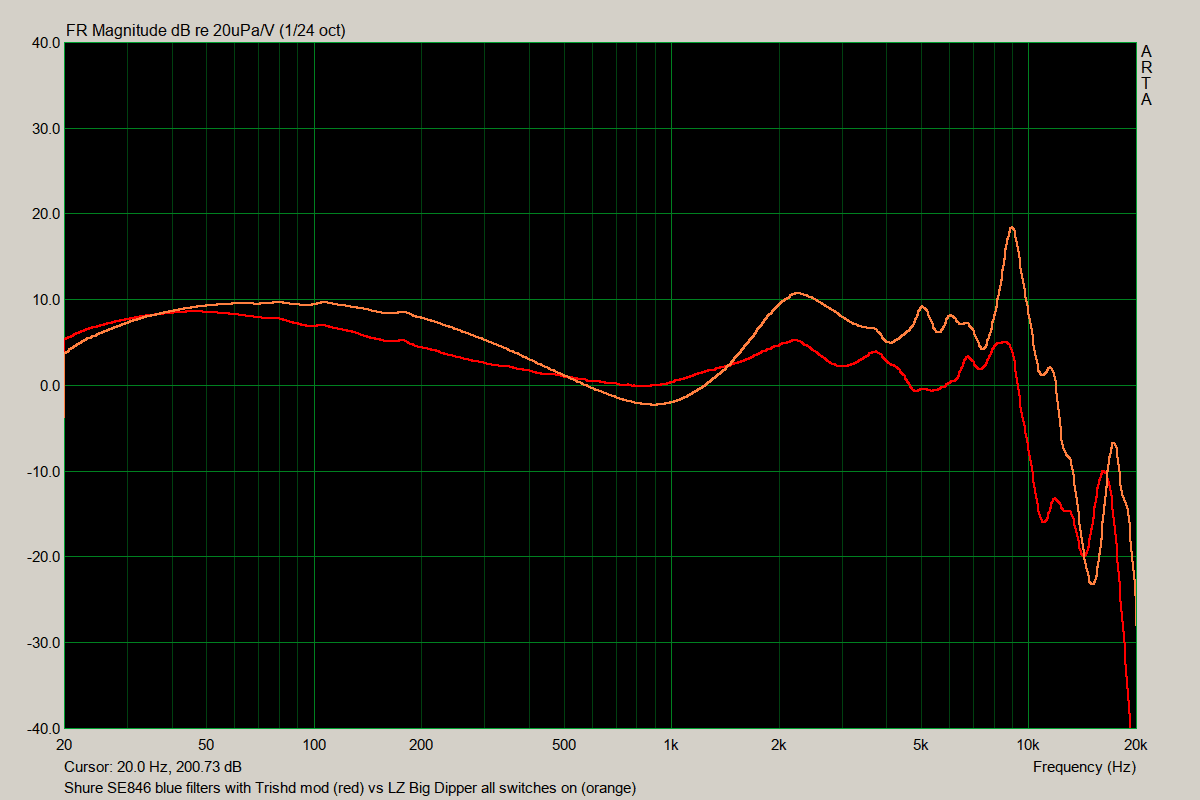
Build
Both IEMs are extremely well built. Both housings are made from a dense resin or poly-carbonate, and both are essentially seamless. The SE846 has a similar width and a little less height, but both are nicely ergonomic. The SE846 has a choice of tuning filters which do affect the upper mids and lower treble quite nicely. The Dipper has the 3 filter switches for a total of 8 possible tuning combinations. Internally its 7 BAs per side for the Dipper vs 4 + the low pass system for the SE846.
Cables
The Dipper has a 2 pin 8 core single ended very flexible cable. Shure uses MMCX and includes 2 cables – both Kevlar coated 3.5mm terminated but in different lengths (one short and one long).
Accessories
I didn’t get the full range of tips when I got the Dipper, but it is not the largest accessory range. The SE846 has more adaptors (including 2 prong airline), 2 cases and of course the filters. The Dippers filters are built in. Both have good quality cases.
Comfort / Ergonomics
Both are extremely comfortable and very ergonomic. This is a toss up overall. The SE846 does tend to isolate slightly better, and might be slightly more comfortable due to the smaller size. I have no issues with either one though.
Overall Sound Quality
Both are flagship quality but quite different signatures. The SE846 has a more balanced and natural signature end to end. Bass on the SE846 has very good definition and impact with a sub-bass emphasis, mids are full and slightly forward, and lower treble has good extension and definition. Comparatively the Dipper is more coloured with similar bass and but more upper mid-range and lower treble emphasis (this can be controlled somewhat with filter switches). It is also leaner through the lower mids which are audibly more recessed. Both have good transparency and staging ability and size.
My Preference
While I like the Dipper’s overall signature and versatility, it is still coloured, and the SE846’s signature is simply more appealing for me personally out of the box. Price wise, they are similar, and the Dipper does offer more tuning options . This one depends on your signature preference, but for me the SE846 wins with the more natural tonality for my tastes.
Shure SE846 (USD 799) vs Earsonics ES5 (USD 1099)
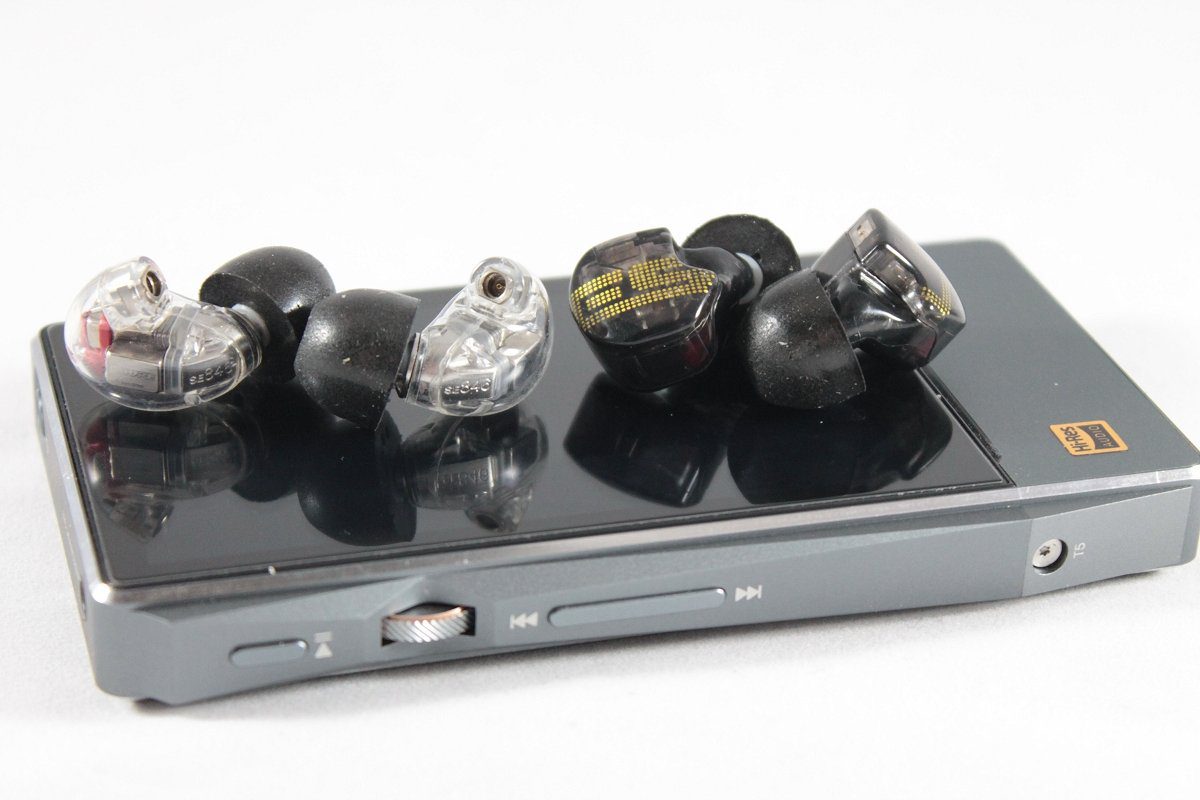
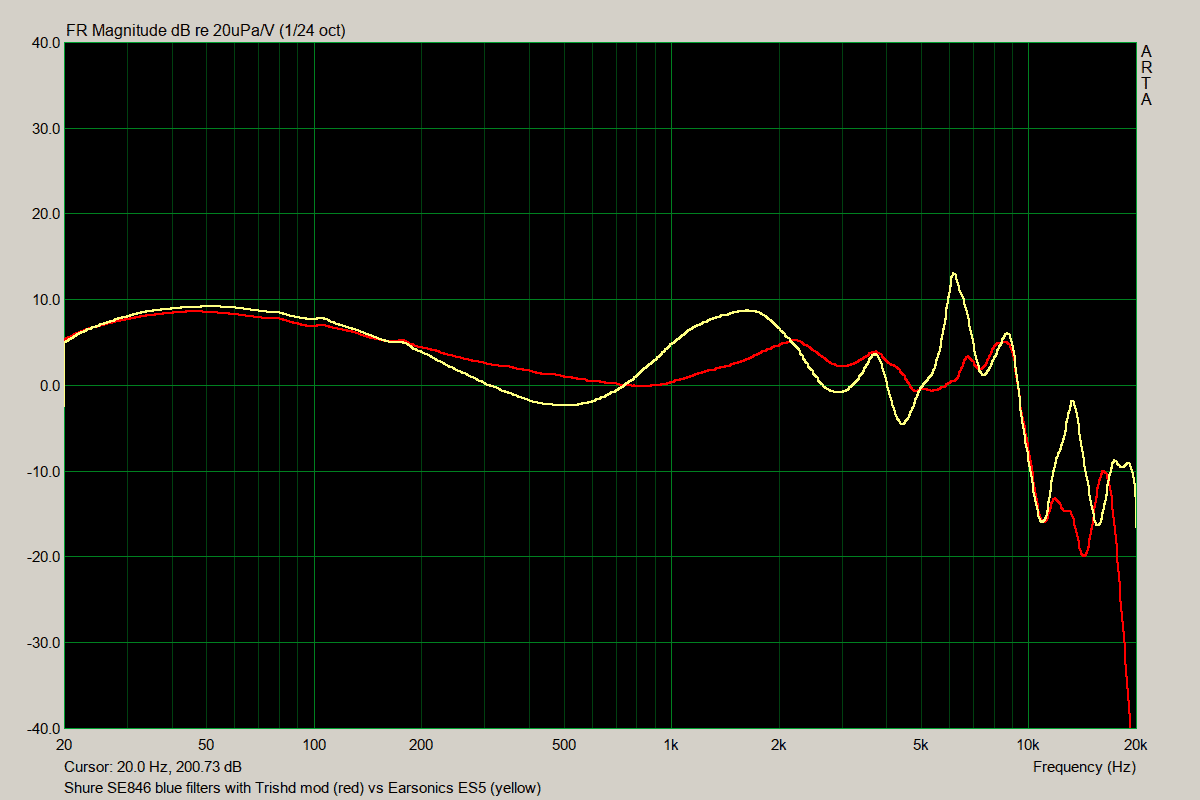
Build
Both IEMs are extremely well built. Both housings are made from a dense resin or poly-carbonate, and both are practically seamless. The ES5 has a little less width and a little less height, but both are nicely ergonomic. The SE846 has a choice of tuning filters which do affect the upper mids and lower treble quite nicely. The ES5 has the internal acoustic chambers and compartmentalisation and also one additional driver. The SE846 has the excellent and quite unique low pass filter system which really does change bass impact.
Cables
The ES5 has the 2 pin twisted pair to twisted triple single-ended cable. Shure uses MMCX and includes 2 cables – both Kevlar coated 3.5mm terminated but in different lengths (one short and one long). The ES5 cable is a little more manageable, while the SE846 is more sturdy.
Accessories
Similar number of tips, but the SE846 has more adaptors (including 2 prong airline), 2 cases and of course the filters.
Comfort / Ergonomics
Both are extremely comfortable and very ergonomic. This is a toss up overall. The SE846 does tend to isolate slightly better though.
Overall Sound Quality
Both are flagship quality but quite different signatures. The SE846 has a much more balanced signature end to end, and depending on the filter used, can be bassy and warm, or clear with good impact. Bass on the SE846 has very good definition and impact with a sub-bass emphasis, mids are full and slightly forward, and with the white filter, lower treble has good extension and definition. Comparatively the ES5 is a little more coloured with stronger bass and also more upper mid-range emphasis. It is a leaner through the lower mids. Both have good transparency and staging ability and size.
My Preference
While I like the ES5’s quite unique signature, it is coloured, and I find myself correcting it’s mid-range with EQ. The SE846 are a more appealing signature for me personally out of the box. Couple this with the fact I don’t need to EQ to my taste, and also that they are significantly cheaper makes the SE846 much more appealing. This one really does depend on your signature preference, but for me the SE846 is outstanding in overall signature and in value.
Shure SE846 (USD 799) vs 64Audio U10 with Apex M20 (USD 980-1399)


Build
Whilst both have good overall builds with acrylic or poly-carbonate shells, I have noticed the tendency of the 64Audio shells to occasionally chip at the nozzle, so I’m going to give the nod to the SE846 on overall build. But although the U10 I have has a slight chip, it still functions beautifully and this is after more than 2 years, so really the build on both is pretty good. The U10 has the Adel or Apex tech – which creates a more open stage, can assist with lowering listening volume, and also allow tuning changes to frequency response. The SE846 has better overall isolation, and the low pass filter. The other main difference is the 4 drivers per side vs 10 per side with the U10.
Cables
The U10 has a single 2 pin cable – twisted pair, to twisted triple. The U10 cables sometimes crack at the 2 pin plug, hence my switch to a different cable. Shure uses MMCX and includes 2 cables – both Kevlar coated 3.5mm terminated but in different lengths (one short and one long). The SE846 cable is more sturdy. Both are flexible.
Accessories
Even contest here. The SE846 includes more tips and adaptors, but the inclusion of the custom case with the U10 and the Apex/Adel modules evens things up.
Comfort / Ergonomics
Both have an ergonomic build and are very comfortable for longer term wearing. Overall the SE846 is slightly more comfortable, and also isolates better. One of the benefits with the U10 + Apex/Adel though is the elimination (or at least lowering) of bone conduction when walking.
Overall Sound Quality
These two are unsurprisingly quite close in tonality, and both have signatures with very good overall balance. The SE846 has more low bass impact, and a touch more euphony with female vocals. The U10 has a little more treble extension and air in the upper end. The U10 also has a wider and deeper sense of stage (the Apex/Adel modules at work). Both have very good transparency.
My Preference
This is the one I’ve been mulling over for the last week – which do I really prefer, and for me its a draw. Ultimately together they would be my dream team. The U10 for space and for outdoors when isolation isn’t a factor. The SE846 for when I need isolation, or perhaps simply when I’m on a female vocal binge. Two great earphones.
Shure SE846 (USD 799) vs HiFiMan RE2000 (USD 1200-2000)

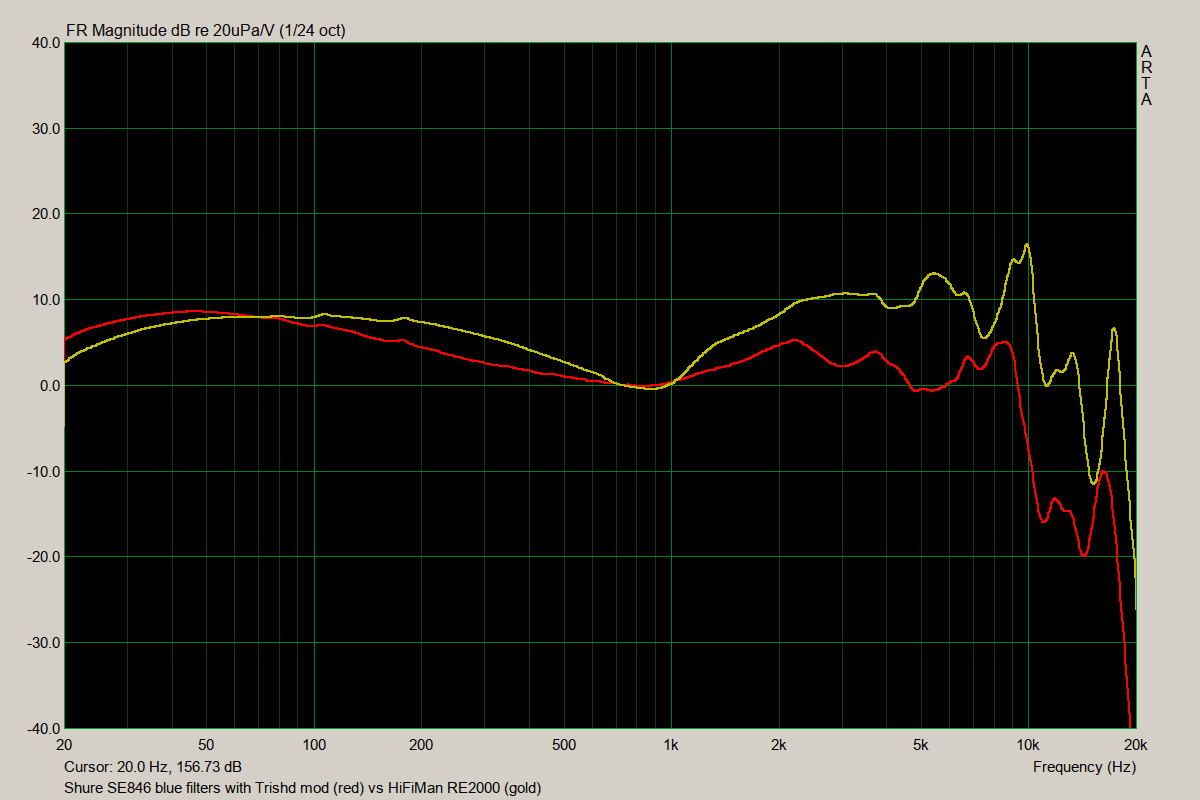
Build
Both have very good overall build quality, with the RE2000 winning on overall build materials (brass and alloy), but losing out on weight as a result. The SE846 has the 4 BA drivers and internal low pass filter, whilst the RE2000 has a proprietary single dynamic full range driver design.
Cables
The RE2000 has a single 2 pin cable – with re-enforced sheath and very low microphonics. Shure uses MMCX and includes 2 cables – both Kevlar coated 3.5mm terminated but in different lengths (one short and one long). The SE846 cable is more sturdy. Both are flexible, but the SE846 would be my pick.
Accessories
Good accessories and tip selection on both. Both packages are comparable.
Comfort / Ergonomics
This goes to the SE846, and by quite a margin. I know some have no issues with the RE2000, but it does have a sharp edge which does cause me some long term comfort issues – where the SE846 is superbly comfortable to wear in comparison.
Overall Sound Quality
The RE2000 remains one of the best dynamic driver earphones I’ve heard. The bass is authoritative, and although the frequency charts show somewhat similar amplitude, its the nature of a dynamic driver to simply have more impact and texture than its BA counterpart. The SE846 may lose out slightly on the bass, but has a more natural sounding mid-range (where the RE2000 is a little more coloured, and skewed toward the upper-mids). The RE2000 has more extension and emphasis in the lower treble – yet it is still quite nicely balanced with the overall signature. The SE846 still has reasonable extension, and can come closer to the RE2000 default signature if the white filters are used.
My Preference
This is an easy one for me. The SE846 is cheaper, more lifelike and natural sounding, and I can tweak with the filters if I have a desire for more treble. But most importantly, it is comfortable to wear for long periods. The RE2000 fails for me on ergonomics, and the price does not really justify the performance, unless it is discounted closer to the 1K mark.
Honourable mention! The Alclair Curve
The Curve has been my reference IEM for a long time – with an essentially flat signature, and very similar to the SE846 signature. Over time I’ve grown to love this IEM. And if you’re prepared to add some bass boost, it really is an excellent IEM. Add the exceptional comfort and stellar build, along with the very good price (approx USD 250) and you have a real winner.
If I use the Curve with the E17K and add +4 bass and -2 treble, it really is surprising how close it gets to the SE846 with blue filter. I just thought it worth the mention, and was quite surprised when I applied the EQ at how close the two are.
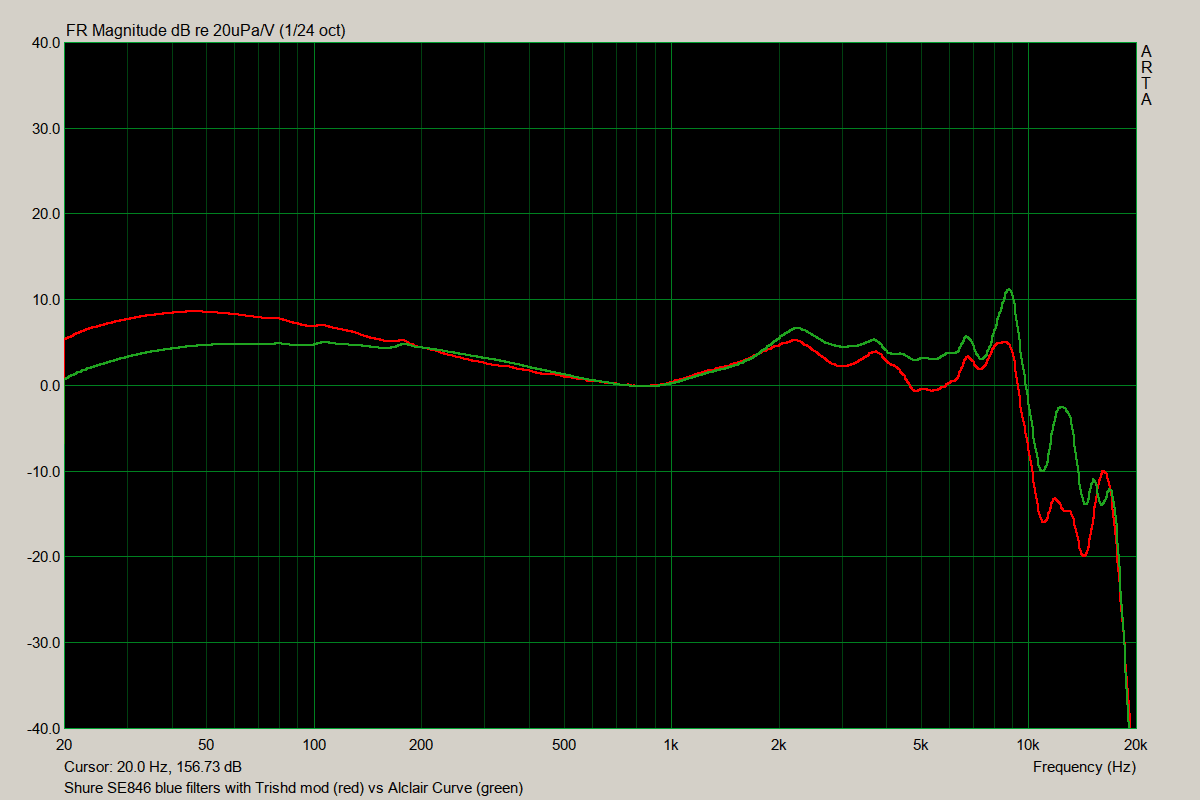
VALUE
One of the main reasons I didn’t originally consider the SE846 as because at ~ $1K, it was simply out of my price range at the time. I’d read about the bass boost, and suspected a mid-centric sound (similar to SE535 LE). There have been many other cheaper offerings on the market showing a lot more value from some of the new manufacturers of IEMs. I realise now how hasty I was in not even wanting to try them.
Even 3 years ago at $1K, the SE846 were reasonable value – three contrasting signatures, impeccable build, and magnificent bass in a BA based IEM. But best of all, these are reasonably neutral, and have such impeccable balance! Fast forward now to today, and you can buy brand new at ~ $800 and second hand at $500-600 if you shop carefully. That represents very good value in my book.
SHURE SE846 – SUMMARY
Its funny how our tastes change over time. When I first started out, it was with the very neutral Shire SE425. Now the wheel turns full circle, and I’m reviewing the quite neutral, but beautifully extended SE846. And what a monitor it is.
Starting with the the build quality and design, Shure have once again built an IEM which is extremely well crafted, very comfortable, and has some genuinely very clever design (the bass wave-guide). This is the best bass I’ve heard on a BA earphone to date. When you couple that with a beautifully balanced and tonally correct mid-range – you have a real winner.
Shure’s filter system is nicely crafted with some intelligent choices, and I’d be willing to bet you could experiment further with other BA filters from a store like Mouser.
In terms of value – I think they are worth their normal asking price of up to $1000, but if you can get them for below this, then the value proposition grows accordingly.
How much do I like them? Well lets just say I’m going to have to sell some earphones / headphones to get a pair of these. The hard part is choosing which need to go. But I am definitely buying a pair of SE846. They are simply “that good”. Bravo Shure.
I just want to close with thanking Rob for allowing me time with his pair.
